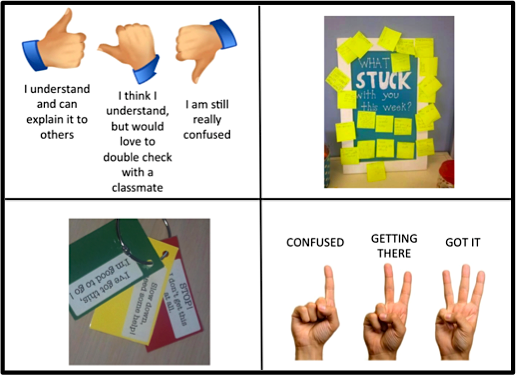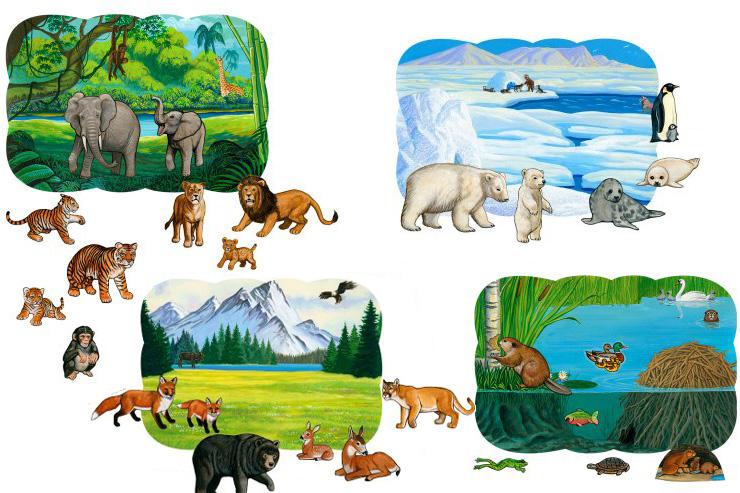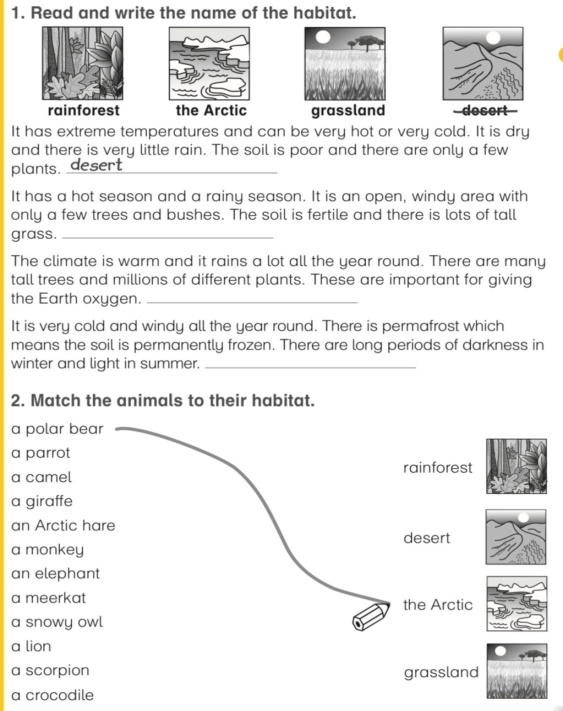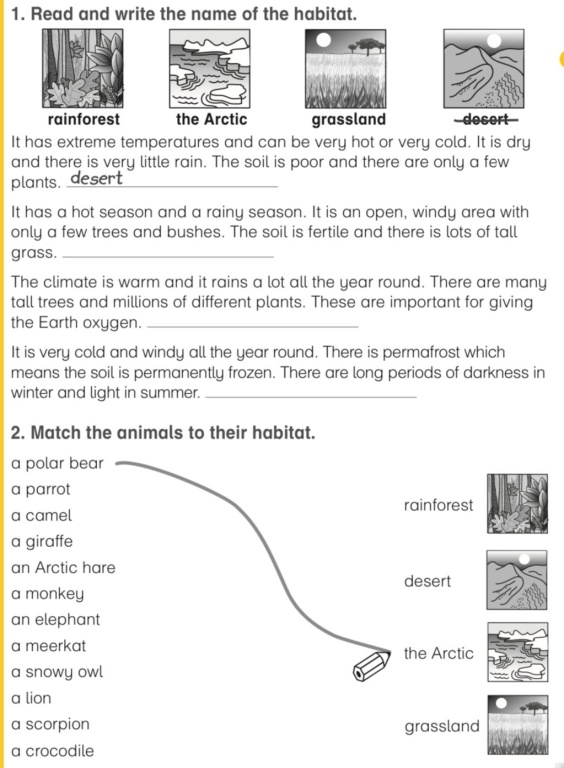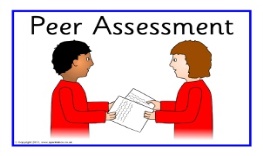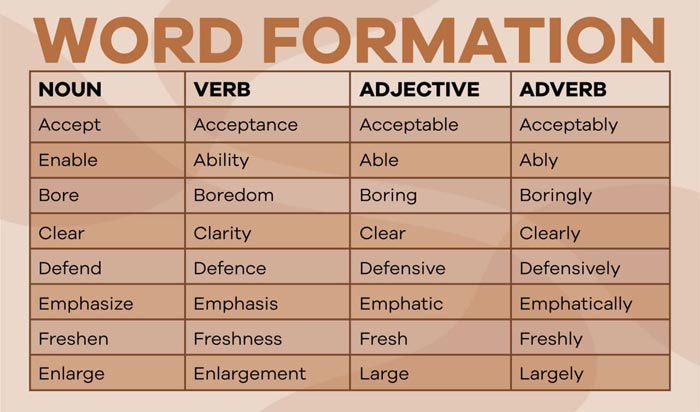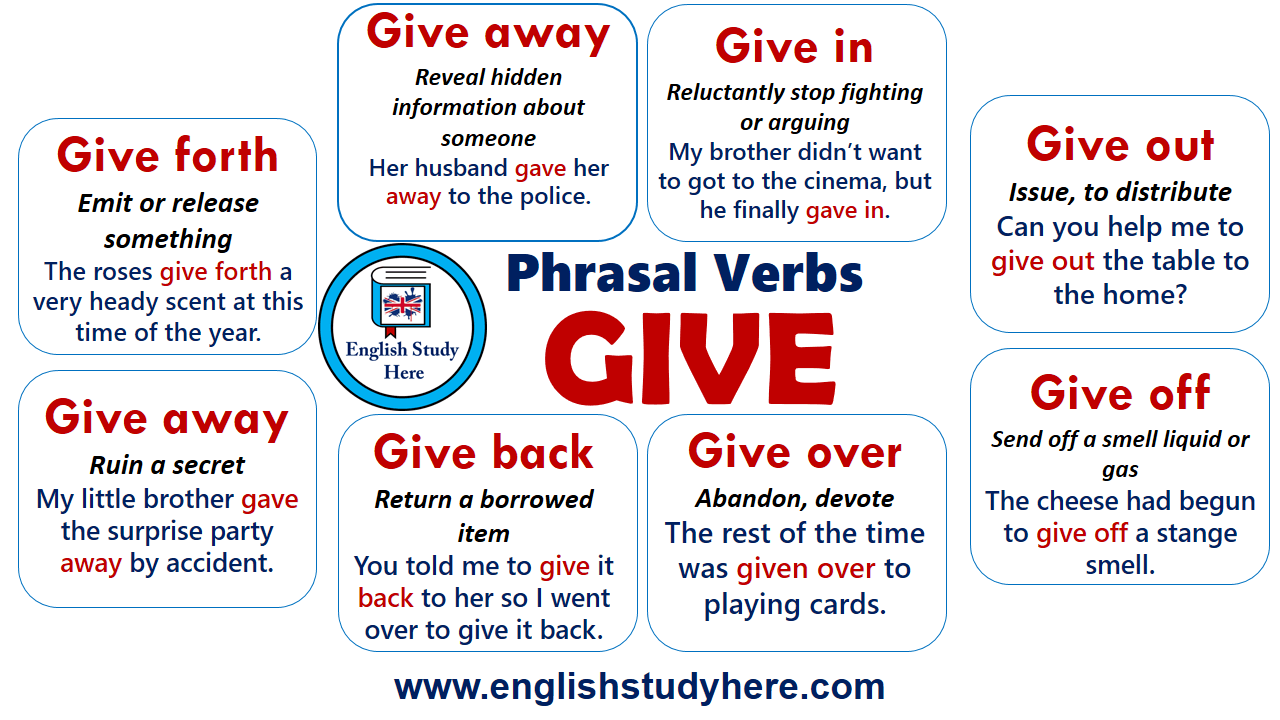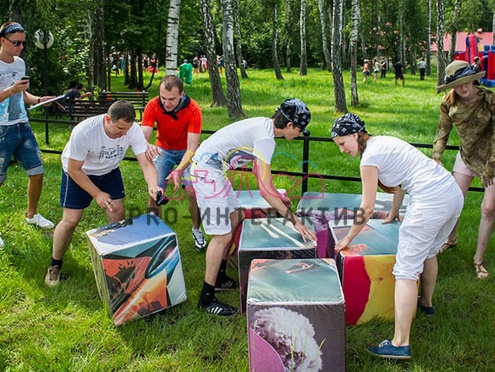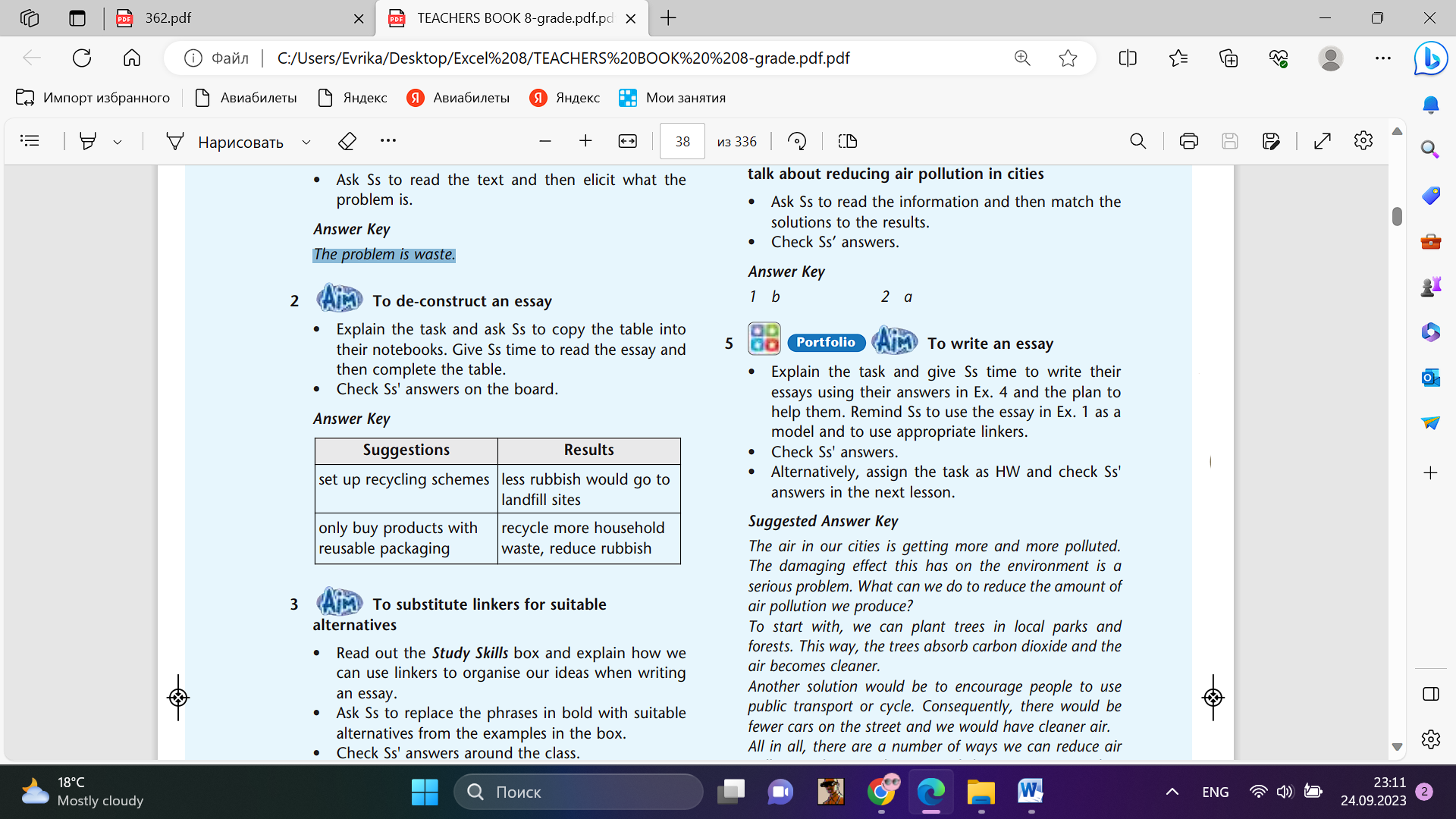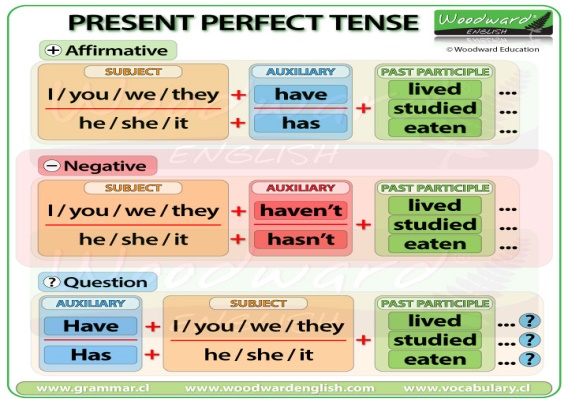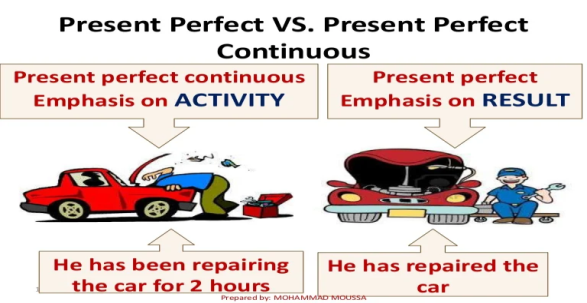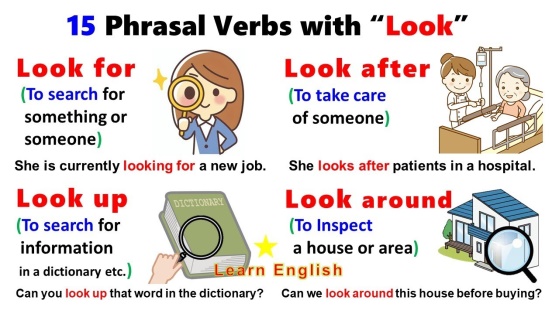
Назар аударыңыз. Бұл материалды сайт қолданушысы жариялаған. Егер материал сіздің авторлық құқығыңызды бұзса, осында жазыңыз. Біз ең жылдам уақытта материалды сайттан өшіреміз
Жақын арада сайт әкімшілігі сізбен хабарласады
қысқа мерзімді сабақ жоспарларын

ҚМЖ Excel 8 term 1.
Сатылымнан түскен қаражат авторға автоматты түрде аударылады. Толығырақ
беріледі

Дипломдар мен сертификаттарды алып үлгеріңіз!


Материалдың толық нұсқасын
жүктеп алып көруге болады
Short term plan
|
Unit 1: Our world lesson 1 |
School: |
||
|
Date: |
Teacher name: |
||
|
Grade: 8 |
Number present: |
absent: |
|
|
Lesson title |
Vocabulary: Global issues |
||
|
Learning objectives |
8.1.9.1 use imagination to express thoughts, ideas, experiences and feelings 8.3.7.1 use appropriate subject-specific vocabulary and syntax to talk about a range of general topics, and some curricular topics |
||
|
Learning objectives (assessment criteria) |
Learners will be able to: - talk about solutions to global issues, - get an overview of the module |
||
|
Levels of thinking skills |
Knowledge and comprehension |
||
|
Stages/ Time |
Teachers actions |
Students actions |
Assessment |
Resources |
|
Beginning 5 min |
Greeting. (Whale class, Individually) T tells the class to make groups of 2. Warm up: With books closed, ask individual students questions such as What’s your favourite TV programme / animal / food? Ask them to describe the item they have chosen. Write any adjectives they use on the board and elicit that they are adjectives. • Elicit and write up other adjectives that students know T: What do you think about today’s theme? Setting the aim of the lesson.
|
Learners read the given sentences on the board and guess the topic and share with their ideas. Remember and recognize the main vocabulary. |
Teacher controles the process, gives feedback and asks additional questions if it’s nessasery. Teacher evaluate pupils with phrases like: “Good job! Well done!” Formative Assessment
|
Sheets of peppers Pictures of to be
https://images.app.goo.gl/sgD8E5vURFsHUqfn6 |
|
Middle 30 min |
Task. I (Wh, I) (pair dicsussion) Ex: 1 P:5 Direct students to the pictures. Play the recording. Students listen and repeat chorally and/or individually |
Learners look at the pictures. Listen and repeat. ANSWERS : Students’ own answer |
T’s feedback
Descriptor: - look at the pictures - listen and repeat Total: 2 point |
Student’s book |
|
|
Task. II (Wh, I) (Task for location) Ex: 2 P:5 • Read the ideas in the list and elicit/explain any unknown words. • Invite one of the students to read out the example. • Ask various students to suggest solutions to the global issues using the ideas in the list as well as ideas of their own. Differentiation: This task differentiated by the learners abilities. More able learners understand and use the ideas from the list |
Learners use the ideas below as well as your own to suggest solutions to some of the problems in the pictures. ANSWERS : A Protecting wildlife habitats helps fight species extinction B Opening more homeless shelters and providing free public housing help fight homelessness. C Walking instead of driving and using public transport help fight air pollution. D Recycling helps fight excess waste. |
Feedback: “Thumbs up, thumbs down” After correct answer teacher shows thumbs up, if there are some mistakes thumbs down with comments Descriptor: - read the ideas in the list - use the ideas in the list Total: 2 point |
Worksheets Stickers |
|
End 5 min |
“Finger” method is used to find out was the lesson clear or not. 5 fingers- I understood 4 fingers -I have some questions 2 fingers-I need a help Ex: P: Home task |
Ss show their knowledge according to the lesson Ss evaluate each other and encourage classmate with phrases like: W |
Poster Success Ladder |
|
Short term plan
|
Unit 1: Our world lesson 2 |
School: |
||
|
Date: |
Teacher name: |
||
|
Grade: 8 |
Number present: |
absent: |
|
|
Lesson title |
Reading: The steppe: A golden treasure |
||
|
Learning objectives |
8.3.1.1 use formal and informal registers in their talk on a growing range of general and curricular topics 8.4.2.1 understand specific information and detail in texts on a growing range of familiar general and curricular topics, including some extended texts; |
||
|
Learning objectives (assessment criteria) |
Learners will be able to: - listen and read for gist - read for specific information |
||
|
Levels of thinking skills |
Knowledge and comprehension |
||
|
Stages/ Time |
Teachers actions |
Students actions |
Assessment |
Resources |
|
Beginning 5 min |
Greeting. (Whale class, Individually) T tells the class to make groups of 2. Warm up: With books closed, write the words carbon footprint on the board and ask students what they understand by it. Ask if students think they have a big or small carbon footprint and why. Ask what makes a person’s carbon footprint bigger, and elicit some ideas such as travelling by car, using energy in the home and buying lots of goods T: What do you think about today’s theme? Setting the aim of the lesson.
|
Learners read the given sentences on the board and guess the topic and share with their ideas. Remember and recognize the main vocabulary. |
Teacher controles the process, gives feedback and asks additional questions if it’s nessasery. Teacher evaluate pupils with phrases like: “Good job! Well done!” Formative Assessment
|
Sheets of peppers Pictures of to be
https://images.app.goo.gl/Nbj3r2njdabViB3E8
|
|
Middle 30 min |
Task. I (Wh, I) (pair dicsussion) Ex: 1 P: 6 Ask students to look at the pictures and then imagine they are there on the steppe. • Ask various students to describe to the class what they can see and feel using their imagination. A learner with individual needs: learner will be supported by teacher and by helpers. Work in pairs. |
Learners look at the pictures. Imagine you are on the steppe. What can you see? How do you feel? Tell the class ANSWERS : I can see the big blue sky above me and the wide, open grassland of the steppe in front of me. I feel alone. |
Feedback: “Thumbs up, thumbs down” After correct answer teacher shows thumbs up, if there are some mistakes thumbs down with comments Descriptor: - look at the pictures. - answer the question Total: 2 point |
Student’s book |
|
|
Task. II (Wh, I) (Task for location) Ex: 2 P: 6 Ask students to read the title and elicit Ss’ guesses as to why the steppe is important to the Kazakh people according to the author. • Play the recording. Students listen and follow the text and find out.
|
Learners read the title of the text. Why is the steppe important to Kazakh people according to the author? Listen and read to find out. ANSWERS: The steppe is important because it is a treasure of natural resources and provides everything for Kazakhstan’s cities |
Self -assessment
Descriptor: - read the title - answer the question Total: 2 point |
Worksheets |
|
|
Task. III (Task for understanding) Ex: 3 P: 6 Explain the task. Allow students time to read the statements and then read the text again and complete the task. Check students’ answers. |
Learners read the text again and decide if the sentences (1-8) are T (true), F (false) or DS (doesn’t say). ANSWERS: 1 F 2 T 3 T 4 F 5 DS 6 T 7 F 8 DS |
T’s feedback
Descriptor: - read the statements - write true, false or doesn’t say Total: 2 point |
Pictures Worksheet |
|
End 5 min |
The Ladder method was used as a reflection. T asks Ss to stick their stickers to the Success Ladder. Green- I understood Yellow-I have some questions Red-I need a help. Home task Ex: P: |
Ss use their stickers to show their knowledge according to the lesson
|
Poster Success Ladder |
|
Short term plan
|
Unit 1: Our world lesson 3 |
School: |
||
|
Date: |
Teacher name: |
||
|
Grade: 8 |
Number present: |
absent: |
|
|
Lesson title |
Vocabulary: Habitats |
||
|
Learning objectives |
8.1.9.1 use imagination to express thoughts, ideas, experiences and feelings 8.3.3.1 give an opinion at discourse level on a wide range of general and curricular topics 8.6.15.1 use infinitive forms after a limited number of verbs and adjectives, use gerund forms after a limited variety of verbs and prepositions, use some prepositional verbs and begin to use common phrasal verbs on a growing range of familiar general and curricular topics; |
||
|
Learning objectives (assessment criteria) |
Learners will be able to: - consolidate new vocabulary - consolidate information in a text and give an opinion - present new vocabulary for habitats and animals; to match animals to habitats |
||
|
Levels of thinking skills |
Knowledge and comprehension |
||
|
Stages/ Time |
Teachers actions |
Students actions |
Assessment |
Resources |
|
Beginning 5 min |
Greeting. (Whale class, Individually) T tells the class to make groups of 2. Warm up: With books closed, write the words low impact and high impact on the board. Explain that your impact on the environment is the effect that you have, through things you do such as travelling and using energy. Ask students if they think they have a low impact or a high impact on the environment. Ask how they could reduce their impact. T: What do you think about today’s theme? Setting the aim of the lesson.
|
Learners read the given sentences on the board and guess the topic and share with their ideas. Remember and recognize the main vocabulary. |
Teacher controles the process, gives feedback and asks additional questions if it’s nessasery. Teacher evaluate pupils with phrases like: “Good job! Well done!” Formative Assessment
|
Sheets of peppers Pictures of to be
https://images.app.goo.gl/FffFq42VPg1wp1os5 |
|
Middle 30 min |
Task. I (Wh, I) (pair dicsussion) Ex: 4 P: 7 Allow Ss time to look up the meanings of the words in bold in the text in their dictionaries or in an online dictionary. • Elicit definitions from Ss around the class. |
Learners explain the words in bold. You can use your dictionary. ANSWERS : harsh (adj): severe, difficult drop (v): to fall suddenly habitat (n): the place where an animal/plants grows/lives endangered (adj): at risk pollution (n): the presence of sth which has harmful/ poisonous effects on the environment. |
T’s feedback Descriptor: - check meanings of the words Total: 2 point |
Student’s book |
|
|
Task. II (Wh, I) (Task for location) Ex: 5 P: 7 Ss discuss in pairs what they found interesting in the text and compare opinions. Ask various pairs to report back to the class. |
Learners tell your partner three things that impressed you from the text. ANSWERS: Suggested Answer I was impressed that the steppe is one third of the country and that the temperatures are so extreme. I was also impressed that the Kazakh people are going to preserve the steppe for future generations. |
Self -assessment
Descriptor: - discuss in pairs - compare opinions. Total: 2 point |
Worksheets |
|
|
Task. III (Task for understanding) Ex: 6 P: 7 Read the dictionary entry aloud and explain that the pictures show different types of habitats. • Read out the list of animals and check that Ss recognise what they are. • Allow Ss time to match the animals to the habitats and then check Ss’ answers. Task: read and write the name of the habitat
Differentiation: A learner with individual needs: This task differentiated by the Ss abilities. Less able Ss define the information and complete the examples help of prompt. |
Learners read the dictionary entry. Look at the pictures. Match the animals to their habitats. ANSWERS: 1 C 2 A 3 E 4 D 5 B |
T’s comment Feedback: “Thumbs up, thumbs down” After correct answer teacher shows thumbs up, if there are some mistakes thumbs down with comments Descriptor: - read the dictionary - match the animals Total: 2 point |
Pictures Worksheet |
|
|
Task. IV Ex: 7 P: 7 Explain the task and give Ss time to match the words to form collocations. Tell Ss they may check in the text if they need to. Check Ss’ answers. Task: match the animals to their
habitat. |
Learners complete the phrases. Use these words. ANSWERS: 1 critically 2 future 3 raw 4 stunning 5 climate 6 natural 7 strong 8 bitter |
Self assessment
Descriptor: - complete the phrases. - match the words Total: 2 point |
Pictures |
|
End 5 min |
The Ladder method was used as a reflection. T asks Ss to stick their stickers to the Success Ladder. Green- I understood Yellow-I have some questions Red-I need a help. Ex: P: Home task |
Ss use their stickers to show their knowledge according to the lesson
|
Poster Success Ladder |
|
Short term plan
|
Unit 1: Our world lesson 4 |
School: |
||
|
Date: |
Teacher name: |
||
|
Grade: 8 |
Number present: |
absent: |
|
|
Lesson title |
Use of English: Infinitive - ing |
||
|
Learning objectives |
8.5.3.1 write with moderate grammatical accuracy on a growing range of familiar general and curricular topics; 8.6.15.1 use infinitive forms after a limited number of verbs and adjectives, use gerund forms after a limited variety of verbs and prepositions, use some prepositional verbs and begin to use common phrasal verbs on a growing range of familiar general and curricular topics; |
||
|
Learning objectives (assessment criteria) |
Learners will be able to: - present the to-infinitive and the -ing form - practise the to-infinitive and the -ing forms - present and practise tenses of the to-infinitive and the -ing form |
||
|
Levels of thinking skills |
Knowledge and comprehension |
||
|
Stages/ Time |
Teachers actions |
Students actions |
Assessment |
Resources |
|
Beginning 5 min |
Greeting. (Whale class, Individually) T tells the class to make groups of 2. Warm up: You can do the same activity with “Yes” on one side of the board and “No” on the other side, and say things like, “This is a book” or “this is my glue” This fun and simple activity gets students up, moving, listening to English, and it can be great grammar or vocabulary review for your students. Setting the aim of the lesson. |
Learners read the given sentences on the board and guess the topic and share with their ideas. Remember and recognize the main vocabulary. |
Teacher controles the process, gives feedback and asks additional questions if it’s nessasery. Teacher evaluate pupils with phrases like: “Good job! Well done!” Formative Assessment |
Sheets of peppers Pictures of to be |
|
Middle 30 min |
Task. I (Wh, I) (pair dicsussion) Ex: 1 P: 8 Present the infinitive forms. Explain that the infinitive is the base form of all verbs. Explain that we can use it with or without the preposition to. Say then write on the board: I want to play football. I can play football. Explain that we use to-infinitive to express purpose and after certain verbs such as would like, would prefer, would love, advise, agree, decide, claim, want, expect, continue, hope, offer, seem, promise, etc. Explain that we use to-infinitive after certain adjectives such as willing, eager, reluctant |
Learners read the theory and say the examples in your language ANSWERS : Students’ own answer |
T’s feedback Descriptor: - read the theory - say the examples in your language Total: 2 point |
Student’s book |
|
|
Task. II (Wh, I) (Task for location) Ex: 2 P: 8 Explain the task and give Ss time to complete it. Then check Ss’ answers around the class.
|
Learners put the verbs in brackets in the correct form. Give reasons ANSWERS: 1 to organise, join 2 to help, donate 3 to protect, cutting 4 to reduce, walking |
Self -assessment Descriptor: - put the verbs in the correct form - complete the task Total: 2 point |
Worksheets |
|
|
Task. III (Task for understanding) Ex: 3 P: 8 Ask Ss to study the table. Refer Ss to the Grammar Reference section for more information. Explain the task and read out the example and then give Ss time to rewrite the sentences using the verbs in brackets and then ask various Ss around the class to read them out to the class. A learner with individual needs: will be paired with helpers and teacher allows him to rewrite the sentences using the verbs in brackets in the correct form. with support. |
Students read the table, then rewrite the sentences using the verbs in brackets in the correct form. ANSWERS: 2 Dilnaz enjoys working with children at the weekend. 3 She claims to have been volunteering all summer. 4 Air pollution tends to get worse each year. 5 He regrets having missed the neighbourhood clean-up day. 6 They appear to be planting trees in the park |
T’s comment Feedback: “Thumbs up, thumbs down” After correct answer teacher shows thumbs up, if there are some mistakes thumbs down with comments Descriptor: - read the table - rewrite the sentences Total: 2 point |
Pictures Worksheet |
|
|
Task. IV (Task for understanding) Ex: 4 P: 8 Explain the task and give Ss time to complete it. |
Learners think of your lifestyle. Complete the sentences so they are true about you ANSWERS: 1 I avoid wasting things. 2 I stopped buying packaged fruit and vegetables. 3 I must recycle more. 4 I’ve always wanted to visit the Kazakh steppe. 5 I’d love to volunteer. 6 I enjoy walking in the countryside. |
Pair assessment
Descriptor: - Complete the sentences Total: 2 point |
|
|
End 5 min |
The Ladder method was used as a reflection. T asks Ss to stick their stickers to the Success Ladder. Green- I understood Yellow-I have some questions Red-I need a help. Ex: P: Home task |
Ss use their stickers to show their knowledge according to the lesson
|
Poster Success Ladder |
|
Short term plan
|
Unit 1: Our world lesson 5 |
School: |
||
|
Date: |
Teacher name: |
||
|
Grade: 8 |
Number present: |
absent: |
|
|
Lesson title |
Use of English: Word formation |
||
|
Learning objectives |
8.5.3.1 write with moderate grammatical accuracy on a growing range of familiar general and curricular topics; 8.6.15.1 use infinitive forms after a limited number of verbs and adjectives, use gerund forms after a limited variety of verbs and prepositions, use some prepositional verbs and begin to use common phrasal verbs on a growing range of familiar general and curricular topics; |
||
|
Learning objectives (assessment criteria) |
Learners will be able to: - Practising word formation (nouns from verbs) - present and practise clauses of reason - present and practise clauses of result |
||
|
Levels of thinking skills |
Knowledge and comprehension |
||
|
Stages/ Time |
Teachers actions |
Students actions |
Assessment |
Resources |
|
Beginning 5 min |
Greeting. (Whale class, Individually) T tells the class to make groups of 2. Warm up: With books closed, ask students what things they already do to help the environment. Write students’ ideas on the board. Ask what other things people can do to help the environment. Ask if they think that an individual can make a big difference. Encourage students to express their own opinions Setting the aim of the lesson.
|
Learners read the given sentences on the board and guess the topic and share with their ideas. Remember and recognize the main vocabulary. |
Teacher controles the process, gives feedback and asks additional questions if it’s nessasery. Teacher evaluate pupils with phrases like: “Good job! Well done!” Formative Assessment
|
Sheets of peppers Pictures of to be
https://images.app.goo.gl/nUK6c51mhVUpBz779
|
|
|
Task. I (Wh, I) (pair dicsussion) Ex: 5 P: 9 Ask Ss to read the theory box and then explain the task. Give Ss time to complete the task and then check their answers. |
Learners read the theory. Then complete each sentence with the noun derived from the word in bold. ANSWERS : 1 pollution 2 destruction 3 conservation 4 explosion 5 reduction |
T’s feedback Descriptor: - read the theory. - complete each sentence with the noun Total: 2 point |
Student’s book |
|
|
Task. II (Wh, I) (Task for location) Ex: 6 P: 9 Explain that clauses of reason are used to express the reason for an action i.e. why sb does sth. Explain that we use as/since/because/now (that)/ for to introduce a clause of reason. Ask Ss to study the theory box and then read the sentences and choose the correct items. Check Ss’ answers. |
Learners read the theory and then choose the correct item ANSWERS: 1 because 2 for 3 As 4 now |
Self -assessment
Descriptor: - read the theory - choose the correct item Total: 2 point |
Worksheets Student’s book |
|
|
Task. III (Task for understanding) Ex: 7 P: 9 Explain that clauses of result are used to express the result of an action. Explain that we use so/such (a/an) ... that to introduce a clause of result. Ask Ss to read the theory box and then complete the sentences. Elicit answers from Ss around the class A learner with individual needs: will be paired with helpers and teacher allows him to complete the gaps with support. |
Learners study the rules, then complete the gaps with so, such or a /an ANSWERS: 1 such a 2 so 3 such 4 such a 5 so 6 such |
Feedback: “Thumbs up, thumbs down” After correct answer teacher shows thumbs up, if there are some mistakes thumbs down with comments Descriptor: - study the rules - complete the gaps Total: 2 point |
Pictures Worksheet |
|
End 5 min |
The Ladder method was used as a reflection. T asks Ss to stick their stickers to the Success Ladder. Green- I understood Yellow-I have some questions Red-I need a help. Ex: P: Home task |
Ss use their stickers to show their knowledge according to the lesson
|
Poster Success Ladder |
|
Short term plan
|
Unit 1: Our world lesson 6 |
School: |
||
|
Date: |
Teacher name: |
||
|
Grade: 8 |
Number present: |
absent: |
|
|
Lesson title |
Reading: natural disasters |
||
|
Learning objectives |
8.3.7.1 use appropriate subject-specific vocabulary and syntax to talk about a range of general topics, and some curricular topics 8.4.4.1 read a growing range of extended fiction and non-fiction texts on familiar and some unfamiliar general and curricular topics; |
||
|
Learning objectives (assessment criteria) |
Learners will be able to: - present natural disasters - listen and read for gist - read for specific information |
||
|
Levels of thinking skills |
Knowledge and comprehension |
||
|
Stages/ Time |
Teachers actions |
Students actions |
Assessment |
Resources |
|
Beginning 5 min |
Greeting. (Whale class, Individually) T tells the class to make groups of 2. Warm up: Agree/Disagree Write “I agree” on one side of the board and “I disagree” on the other side. Have everyone stand up and come to the front of the classroom. Say a statement, such as, “pensioners need to study at school” or “Students shouldn’t bring cellphones to school.” Let students run to “agree” or “disagree” depending on their answer Setting the aim of the lesson.
|
Learners read the given sentences on the board and guess the topic and share with their ideas. Remember and recognize the main vocabulary. |
Teacher controles the process, gives feedback and asks additional questions if it’s nessasery. Teacher evaluate pupils with phrases like: “Good job! Well done!” Formative Assessment
|
Sheets of peppers Pictures of to be
https://images.app.goo.gl/CMu1rpeRv58dhyp5A
|
|
Middle 30 min |
Task. I (Wh, I) (pair dicsussion) Ex: 1 P: 10 Ask Ss to look at the pictures. Play the recording. Ss listen and repeat chorally and/or individually. Elicit the L1 equivalent for each word. |
Learners listen and repeat ANSWERS : Students’ own answer |
T’s feedback Descriptor: - look at the pictures - listen and repeat Total: 2 point |
Student’s book |
|
|
Task. II (Wh, I) (Task for location) Ex: 2 P: 10 Ask Ss to look at the picture and read the title of the text. Elicit Ss’ guesses as to what the text is about. Play the recording. Ss read the text and find out. A learner with individual needs: will be paired with helpers and teacher allows to read the title with support.
|
Learners read the title of the text and look at the picture. What do you think the text is about? ANSWERS: The text is about a young girl who was inspired by an earthquake to become a civil engineer to help people and a film made by the American Society of Civil Engineers designed to inspire more young people to become civil engineers. |
T’s comment Feedback: “Thumbs up, thumbs down” After correct answer teacher shows thumbs up, if there are some mistakes thumbs down with comments Descriptor: - read the title of the text - look at the picture Total: 2 point |
Worksheets |
|
|
Task. III (Wh, I) (Task for location) Ex: 3 P: 10 Ask Ss to read the questions and answer choices 1-3. Give Ss time to read the text and complete the task. Check Ss’ answers around the class. . Differentiation: This task differentiated by the level of grammar literacy and understand of the Ss. |
Learners read the text again. For questions choose the correct answer. ANSWERS: 1 A 2 A 3 C |
Descriptor: - read the text again - choose the correct answer Total: 2 point |
Student’s book |
|
End 5 min |
The Ladder method was used as a reflection. T asks Ss to stick their stickers to the Success Ladder. Green- I understood Yellow-I have some questions Red-I need a help. Ex: P: Home task |
Ss use their stickers to show their knowledge according to the lesson
|
Poster Success Ladder |
|
Short term plan
|
Unit 1: Our world lesson 7 |
School: |
||
|
Date: |
Teacher name: |
||
|
Grade: 8 |
Number present: |
absent: |
|
|
Lesson title |
Phrasal verbs |
||
|
Learning objectives |
8.2.3.1 understand with little or no support most of the detail of an argument in extended talk on a wide range of general and curricular topics; 8.3.5.1 interact with peers to negotiate, agree and organise priorities and plans for completing classroom tasks 8.6.15.1 use infinitive forms after a limited number of verbs and adjectives, use gerund forms after a limited variety of verbs and prepositions, use some prepositional verbs and begin to use common phrasal verbs on a growing range of familiar general and curricular topics; |
||
|
Learning objectives (assessment criteria) |
Learners will be able to: - consolidate information in a text - listen for specific information - write an email |
||
|
Levels of thinking skills |
Knowledge and comprehension |
||
|
Stages/ Time |
Teachers actions |
Students actions |
Assessment |
Resources |
|
Beginning 5 min |
Greeting. (Whale class, Individually) T tells the class to make groups of 2. Warm up: With books closed, ask students if they ever organize events with their friends. Ask them to imagine that they want to organize a party or barbecue with some friends. Ask what things they need to plan, and elicit some ideas. Ask if one person will do everything, and elicit that they will ask their friends for help. Tell students they are going to practise offering and asking for help Setting the aim of the lesson.
|
Learners read the given sentences on the board and guess the topic and share with their ideas. Remember and recognize the main vocabulary. |
Teacher controles the process, gives feedback and asks additional questions if it’s nessasery. Teacher evaluate pupils with phrases like: “Good job! Well done!” Formative Assessment
|
Sheets of peppers Pictures of to be
https://images.app.goo.gl/F4jeuwuK45Gxqb8cA
|
|
Middle 30 min |
Task. I (Wh, I) (pair dicsussion) Ex: 4 P: 11 Read out the box and explain the task. • Give Ss time to complete the task. • Check Ss’ answers |
Learners read the box, then complete the sentences. ANSWERS: 1 out 2 back 3 in 4 off 5 away |
Pair assessment Descriptor: - read the box, - complete the sentences Total: 2 point |
Student’s book |
|
|
Task. II (Wh, I) (Task for location) Ex: 5 P: 11 Ask Ss to work in pairs and ask and answer questions following the example referring to the text as necessary. • Monitor the activity around the class. Differentiation: A less motivated learner work in pairs, and do the example with support. A learner with individual educational needs: Task: Ask the question about natural disaster with support. What happened in Turkey in 2023? How many people died from this earthquake? What happened in China in August? |
Learners ask and answer questions about the text in pairs. ANSWERS: A: What happened in Turkey in 1999? B: A huge earthquake. Who is Menzer Pehlivan? A: A civil engineer specialising in earthquake safety. How does she relate to ‘Dream Big’? B: Her story is one of many in the film. etc |
T’s ffedback Descriptor: - work in pairs - ask and answer Total: 2 point |
Worksheets Student’s book |
|
|
Task. III (Task for understanding) Ex: 6 P: 11 • Explain the task and ask Ss to look at the form and think about what the missing information might be. • Play the recording. Ss listen and complete the blanks 1-5. • Check Ss’ answers. A learner with individual needs: will be paired with helpers and teacher allows him to fill in the missing information with support. |
Learners look at the form. You will hear a dialogue about donating money to the ASCE Foundation. Listen and fill in the missing information. ANSWERS : 1 Regular ✓ 2 $25 3 Direct Debit (Bank Account) ✓ 4 Ulan Akhmetov 5 25 Kolpakovskiy Street, Almaty |
Pair assessment
Descriptor: - look at the form - fill in the missing information Total: 2 point |
|
|
|
Task. IV Ex: 7 P: 11 Explain the task. Tell Ss to make notes on each point and then use their notes to help them write their email. Allow time for Ss to complete their emails. • Ask various Ss around the class to read their emails aloud to the class.
|
Learners write a short email to your English pen-friend telling him/her about the Dream Big film. Explain what impressed you and suggest that he/she see it. ANSWERS: Hi Jane, How are you? I hope you are well. I’m writing to tell you about a really good film I watched recently. It’s called ‘Dream Big’ and it’s about what inspired different people to become civil engineers. I really enjoyed the film and the challenges that civil engineers face really impressed me. I think you would enjoy it too and I recommend you see it. That’s all for now, Write soon Aizhan |
T’s comment Descriptor: - write a short email - read the emails Total: 2 point |
|
|
End 5 min |
The Ladder method was used as a reflection. T asks Ss to stick their stickers to the Success Ladder. Green- I understood Yellow-I have some questions Red-I need a help. Ex: P: Home task |
Ss use their stickers to show their knowledge according to the lesson
|
Poster Success Ladder |
|
Short term plan
|
Unit 1: Our world lesson 8 |
School: |
||
|
Date: |
Teacher name: |
||
|
Grade: 8 |
Number present: |
absent: |
|
|
Lesson title |
Everyday English: Applying to an environmental organization |
||
|
Learning objectives |
8.2.7.1 recognize typical features at word, sentence and text level of a growing range of spoken genres 8.3.1.1 use formal and informal registers in their talk on a growing range of general and curricular topics; 8.4.1.1 understand the main points in texts on a growing range of unfamiliar general and curricular topics, including some extended texts; |
||
|
Learning objectives (assessment criteria) |
Learners will be able to: - practise pronunciation of situational language - learn synonymous phrases - pronounce the oo sounds |
||
|
Levels of thinking skills |
Knowledge and comprehension |
||
|
Stages/ Time |
Teachers actions |
Students actions |
Assessment |
Resources |
|
Beginning 5 min |
Greeting. (Whale class, Individually) T tells the class to make groups of 2. Warm up: Ask students what environmental problems there are in their town or area. Elicit some ideas. Ask students what they can do if they notice an environmental problem in their area. Elicit that they can write to people in the area, encouraging them to help solve the problem. If students do not come up with this idea, prompt them by asking what Rebecca Hosking did when she noticed the problem with plastic bags Setting the aim of the lesson. Do these organizations protect our natural environment?
|
Learners read the given sentences on the board and guess the topic and share with their ideas. Remember and recognize the main vocabulary. |
Teacher controles the process, gives feedback and asks additional questions if it’s nessasery. Teacher evaluate pupils with phrases like: “Good job! Well done!” Formative Assessment
|
Sheets of peppers Pictures of to be |
|
Middle 30 min |
Task. I (Wh, I) (pair dicsussion) Ex: 1 P: 12 Play the recording. Ss listen and repeat chorally and/or individually. Pay attention to Ss' pronunciation and intonation and correct as necessary. |
Learners listen and repeat ANSWERS: Students’ own answer
|
Pair assessment Descriptor: - listen and repeat Total: 2 point |
Student’s book |
|
|
Task. II (Wh, I) (Task for location) Ex: 2 P: 12 Refer Ss to the sentences in Ex. 1 again and elicit Ss' guesses as to what the dialogue is about. Play the recording. Ss listen and read the text to find out. |
Learners listen and read to find out. ANSWERS: The dialogue is about someone who wants to find out about volunteering for an environmental organisation |
T’s ffedback Descriptor: - listen and read - guess the dialogue is about Total: 2 point |
Worksheets Student’s book |
|
|
Task. III (Task for understanding) Ex: 3 P: 12 Read out the phrases. Refer Ss back to the dialogue and elicit the synonymous ones from various Ss around the class. Differentiation: This task differentiated by the learners abilities. More able learners understand and complete the examples from the text |
Learners find similar sentences in the dialogue that mean. ANSWERS : Do I need to bring anything? What equipment do! need? You have to be in good condition. You should be physically fit. I'm interested in volunteering. I'd like to find out about volunteering. How can I register? How do I sign up? |
Feedback: “Thumbs up, thumbs down” After correct answer teacher shows thumbs up, if there are some mistakes thumbs down with comments Descriptor: - read the dialogue - find similar sentences Total: 2 point |
|
|
|
Task. IV (Task for understanding) Ex: 4 P: 12 Explain the situation and ask Ss to read the advert. Remind Ss that they can use the dialogue in Ex. 2 as a model as well as any ideas of their own to complete the task. Ss complete the task in pairs. To help Ss, draw the following diagram on the board and elicit appropriate phrases Ss should use. Write them on the board. Ss can refer to the diagram while doing the task. A learner with individual needs: will be paired with helpers and teacher allows him to read the advert and act out a dialogue with support. |
Learners read the advert. Act out a dialogue. Similar to the one. ANSWERS: A: Good morning. Helping Hands. B: Oh, hello. I'd like to find out about volunteering for your organisation. A: Great! We hold regular volunteer action days every Saturday. The work includes collecting clothes and helping out at the homeless shelter. B: It sounds good. So if I become a volunteer, what should I expect? A: Well, it can be hard work, but you don't need any experience. B: Do I need to bring anything? |
Descriptor: - read the advert - act out a dialogue Total: 2 point |
|
|
End 5 min |
The Ladder method was used as a reflection. T asks Ss to stick their stickers to the Success Ladder. Green- I understood Yellow-I have some questions Red-I need a help. Ex: P: Home task |
Ss use their stickers to show their knowledge according to the lesson
|
Poster Success Ladder |
|
Short term plan
|
Unit 1: Our world lesson 9 |
School: |
||
|
Date: |
Teacher name: |
||
|
Grade: 8 |
Number present: |
absent: |
|
|
Lesson title |
Across cultures: Unique structures |
||
|
Learning objectives |
8.1.10.1 use talk or writing as a means of reflecting on and exploring a range of perspectives on the world 8.4.2.1 understand specific information and detail in texts on a growing range of familiar general and curricular topics, including some extended texts; 8.5.1.1 plan, write, edit and proofread work at text level with little support on a growing range of general and curricular topics; |
||
|
Learning objectives (assessment criteria) |
Learners will be able to: - Introduce the topic and listen and read for specific information. - Compare and contrast buildings - Write a short text about an eco – friendly building |
||
|
Levels of thinking skills |
Knowledge and comprehension |
||
|
Stages/ Time |
Teachers actions |
Students actions |
Assessment |
Resources |
|
Beginning 5 min |
Greeting. (Whale class, Individually) T tells the class to make groups of 2. Warm up: Draw students’ attention to the photo of the stranded ships and ask them where they think it is and what has happened. Ask students to think of any other environmental problems and their causes Setting the aim of the lesson. What do you think about unique buildings?
|
Learners read the given sentences on the board and guess the topic and share with their ideas. Remember and recognize the main vocabulary. |
Teacher controles the process, gives feedback and asks additional questions if it’s nessasery. Teacher evaluate pupils with phrases like: “Good job! Well done!” Formative Assessment |
Sheets of peppers Pictures of to be
https://images.app.goo.gl/LpbyhffcvyP8SbGy8 |
|
Middle 30 min |
Task. I (Wh, I) (pair dicsussion) Ex: 1 P: 13 Direct Ss' attention to the pictures and elicit Ss' guesses as to what is special about these buildings. Play the recording. Ss listen and follow the text in their books to find out. |
Learners look at the pictures and read the titles of the texts. What is special about these buildings ANSWERS: The buildings are unique structures that are eco-friendly |
Pair assessment
Descriptor: - look at the pictures - read the titles Total: 2 point |
Student’s book |
|
|
Task. II (Wh, I) (Task for location) Ex: 2 P: 13 Read the sentences stems aloud one at a time and ask Ss to read the texts again and complete them. Ask Ss to use the Word List to look up the meanings of the words in the Check these words box, then check Ss' answers T asks some CCQs:
|
Learners read the text again and complete the sentences. ANSWERS: 1 main tourist attractions 2 a yurt 3 can withstand high winds 4 explore issues such as energy, water and the environment 5 special pipes Yes or No in CCQ ANSWERS -Yes -Yes -Yes - No |
T’s ffedback
Descriptor: - read the text - complete the sentences Total: 2 point Descriptor: - answers Yes or No |
Worksheets Student’s book |
|
|
Task. III (Task for understanding) Ex: 3 P: 13 Give Ss time to read the texts again if necessary and think about their answers. Ask Ss to compare the buildings in pairs following the example. Monitor the activity around the class and then ask some pairs to report back to the class Differentiation: Teacher supports less able learners with words in blue, complete the rules and definitions. |
Learners work in pairs. Compare and contrast the two buildings in the texts. Use present simple, past simple, and present perfect ANSWERS : A: The Khan Shatyr opened in 2010 whereas the Crystal opened in 2012. B: That's true. Both buildings are eco-friendly. A: Yes, and both buildings are great examples of modern architecture working with nature. |
Self assessment Feedback: “Thumbs up, thumbs down” After correct answer teacher shows thumbs up, if there are some mistakes thumbs down with comments Descriptor: - work in pairs - compare and contrast Total: 2 point |
|
|
|
Task. IV (Task for understanding) Ex: 4 P: 13 Explain the task and ask Ss to work in small groups and collect information from the Internet about an eco-friendly building and make notes. Then ask Ss to use their notes to write a short text about an eco-friendly building. Ask various Ss to read their text to the class. Alternatively, assign the task as HW and check Ss' answers in the next lesson. |
Students write a short text about eco – friendly building in your country. ANSWERS: The Edge in the Netherlands is the most eco-friendly building in the world. It has got solar panels that produce more electricity than the building uses. It has a natural ventilation system that uses mesh panels and lots of windows to allow natural light in. It has a water collection system that uses rainwater to flush the toilets and water the gardens. It also has birdhouses and bat boxes in the gardens for the local wildlife. |
Pair asessment
Descriptor: - write a short text about eco – friendly building in your country Total: 2 point |
|
|
End 5 min |
The Ladder method was used as a reflection. T asks Ss to stick their stickers to the Success Ladder. Green- I understood Yellow-I have some questions Red-I need a help. Ex: P: Home task |
Ss use their stickers to show their knowledge according to the lesson
|
Poster Success Ladder |
|
Short term plan
|
Unit 1: Our world lesson 10 |
School: |
||
|
Date: |
Teacher name: |
||
|
Grade: 8 |
Number present: |
absent: |
|
|
Lesson title |
Across curriculum: PSHE. Global citizenship |
||
|
Learning objectives |
8.2.1.1 understand with little or no support the main points in extended talk on a wide range of general and curricular topics; 8.3.3.1 give an opinion at discourse level on a wide range of general and curricular topics; 8.4.2.1 understand specific information and detail in texts on a growing range of familiar general and curricular topics, including some extended texts; |
||
|
Learning objectives (assessment criteria) |
Learners will be able to: - Introduce the topic and predict the content of the text - Consolidate comprehension of a text - Prepare a poster |
||
|
Levels of thinking skills |
Knowledge and comprehension |
||
|
Stages/ Time |
Teachers actions |
Students actions |
Assessment |
Resources |
|
Beginning 5 min |
Greeting. (Whale class, Individually) T tells the class to make groups of 2. Warm up: With books closed, write the phrase sustainable development on the board. Elicit or explain the meaning, and ask students to give examples of development that is sustainable. Encourage students to contribute ideas, but do not confirm or reject any at this stage. Setting the aim of the lesson.
|
Learners read the given sentences on the board and guess the topic and share with their ideas. Remember and recognize the main vocabulary. |
Teacher controles the process, gives feedback and asks additional questions if it’s nessasery. Teacher evaluate pupils with phrases like: “Good job! Well done!” Formative Assessment
|
Sheets of peppers Pictures of to be
https://images.app.goo.gl/vV3koAt9aCaEibPK6 |
|
Middle 30 min |
Task. I (Wh, I) (pair dicsussion) Ex: 1 P: 14 Ask S to look at the pictures and read the title. Elicit Ss' guesses as to what it means to be a global citizen. Play the recording. Ss listen and read the text and check if their guesses were correct. |
Learners look at the pictures and read the title. What does it mean to be a global citizen. ANSWERS: Being a global citizen means being involved with your community and the wider world. |
Pair assessment Descriptor: - look at the pictures and read the title Total: 2 point |
Student’s book |
|
|
Task. II (Wh, I) (Task for location) Ex: 2 P: 14 Ask Ss to read statements 1-5. Give Ss time to read the text again and complete the task. Check Ss' answers around the class. |
Learners read the text again and decide if the sentences are T (true), F (false) or DS (doesn/t say) ANSWERS: 1 F 2 T 3 DS 4 T |
T’s ffedback Descriptor: - read the text again and decide if the sentences are T, F, DS Total: 2 point |
Worksheets Student’s book |
|
|
Task. III (Task for understanding) Ex: 3 P: 14 Give Ss time to read the text again and formulate their answers. Then ask various Ss to use the pictures to make a speech about being a global citizen to the rest of the class. Differentiation Learners will be supported by teacher and by helpers from his class.
|
Learners use the pictures and the text to make a speech to your classmates about the importance of being a global citizen. ANSWERS : We need to be good citizens to make our community better for everyone. We should donate clothing, toys and appliances to charities that help other people. We should plant trees in the local park to improve and protect the environment. We should volunteer with a local group to clean up our neighbourhood. By doing these things, we can make a positive change in our community and in the world. |
Self assessment Feedback: “Thumbs up, thumbs down” After correct answer teacher shows thumbs up, if there are some mistakes thumbs down with comments Descriptor: - make a speech to your classmates about the importance of being a global citizen. Total: 2 point |
|
|
|
Task. IV (Task for understanding) Ex: 4 P: 14 Ask Ss to work in small groups and do some research online and collect information about being a global citizen. Then give Ss time to prepare a poster. When the task is completed display the posters around the class. |
Learners collect information, then prepare a poster on how to make a positive change to the world by being a global citizen. You can use the key words Global citizen. ANSWERS: To make a positive change by being a global citizen you can: volunteer for a group that helps your local community |
Self assessment Descriptor: - prepare a poster on how to make a positive change to the world by being a global citizen Total: 2 point |
|
|
End 5 min |
The Ladder method was used as a reflection. T asks Ss to stick their stickers to the Success Ladder. Green- I understood Yellow-I have some questions Red-I need a help. Ex: P: Home task |
Ss use their stickers to show their knowledge according to the lesson
|
Poster Success Ladder |
|
Short term plan
|
Unit 1 Our world lesson 11 |
School: |
||
|
Date: |
Teacher name: |
||
|
Grade: 8 |
Number present: |
absent: |
|
|
Lesson title |
Writing: A letter to the editor suggesting solutions to a problem Summative assessment for the unit 1 |
||
|
Learning objectives |
8.1.10.1 use talk or writing as a means of reflecting on and exploring a range of perspectives on the world 8.3.7.1 use appropriate subject-specific vocabulary and syntax to talk about a range of general topics, and some curricular topics 8.4.1.1 understand the main points in texts on a growing range of unfamiliar general and curricular topics, including some extended texts |
||
|
Learning objectives (assessment criteria) |
Learners will be able to: - Read for specific information - Substitute linkers for suitable alternatives. - Talk about reducing air pollution in cities. |
||
|
Levels of thinking skills |
Knowledge and comprehension |
||
|
Stages/ Time |
Teachers actions |
Students actions |
Assessment |
Resources |
|
Beginning 5 min |
Greeting. (Whale class, Individually) T tells the class to make groups of 2. Warm up: With books closed, write the phrase sustainable development on the board. Elicit or explain the meaning, and ask students to give examples of development that is sustainable. Encourage students to contribute ideas, but do not confirm or reject any at this stage. Setting the aim of the lesson.
|
Learners read the given sentences on the board and guess the topic and share with their ideas. Remember and recognize the main vocabulary. |
Teacher controles the process, gives feedback and asks additional questions if it’s nessasery. Teacher evaluate pupils with phrases like: “Good job! Well done!” Formative Assessment
|
Sheets of peppers Pictures of to be
https://images.app.goo.gl/DSp7dQR6iodFtbnr8
|
|
Middle 30 min |
Task. I (Wh, I) (pair dicsussion) Ex: 1 P: 15 Ask Ss to read the text and then elicit what the problem is |
Learners look at the letter. Read and check ANSWERS: The problem is waste. |
Pair assessment Descriptor: - look at the letter - read and check Total: 2 point |
Student’s book |
|
|
Task. II (Wh, I) (Task for location) Ex: 2 P: 15 Explain the task and ask Ss to copy the table into their notebooks. Give Ss time to read the essay and then complete the table. Check Ss' answers on the board. |
Students read the letter. Copy and complete the table with information from the letter. ANSWERS:
|
T’s ffedback Descriptor: - read the letter - copy and complete Total: 2 point |
Worksheets Student’s book |
|
|
Task. III (Task for understanding) Ex: 3 P: 15 Read out the Study Skills box and explain how we can use linkers to organise our ideas when writing an essay. Ask Ss to replace the phrases in bold with suitable alternatives from the examples in the box. Check Ss' answers around the class. A learner with individual needs: will be paired with helpers and teacher allows him to replace the phrases in bold with alternatives from with support. |
Learners replace the phrases in bold with alternatives from the Study Skills box. ANSWERS: To begin with = To start with This way = Therefore Another solution would be = Another way to solve this problem would be As a result = Consequently All in all = To sum up |
Pair assessment
- replace the phrases - use linkers Total: 2 point |
|
|
|
Task. IV (Task for understanding) Ex: 4 P: 15 Ask Ss to read the information and then match the solutions to the results. Check Ss’ answers. Summative Assessment for the unit 1 |
Learners work in pairs. Match the suggestions to the expected results, then talk about how people can reduce air pollution in cities. ANSWERS: 1 b 2 a |
Descriptor: - work in pairs - match the solutions Total: 2 point |
|
|
End 5 min |
The Ladder method was used as a reflection. T asks Ss to stick their stickers to the Success Ladder. Green- I understood Yellow-I have some questions Red-I need a help. Ex: P: Home task |
Ss use their stickers to show their knowledge according to the lesson
|
Poster Success Ladder |
|
Short term plan
|
Unit 2 Daily life and shopping lesson 12 |
School: |
||
|
Date: |
Teacher name: |
||
|
Grade: 8 |
Number present: |
absent: |
|
|
Lesson title |
Vocabulary: Daily routines and Free – time activities |
||
|
Learning objectives |
8.1.1.1 use speaking and listening skills to solve problems creatively and cooperatively in groups; 8.3.7.1 use appropriate subject-specific vocabulary and syntax to talk about a range of general topics, and some curricular topics |
||
|
Learning objectives (assessment criteria) |
Learners will be able to: - Present daily routines and free time activities. - Classify activities as daily routines or free time activities. - Consolidate new vocabulary through personal examples |
||
|
Levels of thinking skills |
Knowledge and comprehension |
||
|
Stages/ Time |
Teachers actions |
Students actions |
Assessment |
Resources |
|
Beginning 5 min |
Greeting. (Whale class, Individually) T tells the class to make groups of 2. Warm up: With books closed, write the phrase sustainable development on the board. Elicit or explain the meaning, and ask students to give examples of development that is sustainable. Encourage students to contribute ideas, but do not confirm or reject any at this stage. Setting the aim of the lesson.
|
Learners read the given sentences on the board and guess the topic and share with their ideas. Remember and recognize the main vocabulary. |
Teacher controles the process, gives feedback and asks additional questions if it’s nessasery. Teacher evaluate pupils with phrases like: “Good job! Well done!” Formative Assessment
|
Sheets of peppers Pictures of to be
https://images.app.goo.gl/PLmSqSrVqL7tA7o58
|
|
Middle 30 min |
Task. I (Wh, I) (pair dicsussion) Ex: 1 P: 17 Read out the list of daily routines & free-time activities. Direct Ss to the pictures and then give them time to match them to the daily routines & free-time activities. Check Ss’ answers. Differentiation: This task differentiated by the outcomes of the learners. More able learners finish their work before the time limit. |
Learners Students say different words from the picture Students match the pictures to the daily routines or free time activities. ANSWERS: 2 watch TV 3 do chores 4 do homework/study 5 go shopping 6 hang out with friends 7 go to school 8 surf the Net \ 9 play video games 10 work 11 exercise 12 be in a sports club |
Feedback: “Thumbs up, thumbs down” After correct answer teacher shows thumbs up, if there are some mistakes thumbs down with comments Descriptor: - match the pictures to the daily routines or free time activities. Total: 2 point |
Student’s book |
|
|
Task. II (Wh, I) (Task for location) Ex: 2 P: 17 Ask Ss to decide in pairs which of the activities in the pictures are daily routines and which are free time activities. Elicit answers from Ss around the class. |
Learners decide in pairs. Which are daily routines? ANSWERS Daily routines: do homework/study, work, do chores, go to school Free-time activities: be in a sports club, hang out with friends, go shopping, surf the Net, watch TV, eat out, exercise, play video games |
T’s ffedback
Descriptor: - work in pairs - identify the pictures Total: 2 point |
Worksheets Student’s book |
|
|
Task. III (Task for understanding) Ex: 3 P: 17 Ask Ss to use the phrases from Ex. 1 to describe their daily routine and free time activities. Give Ss time to consider their answers. Elicit answers from Ss around the class. A learner with individual needs: will be paired with helpers and teacher allows him to use phrases from ex 1 to describe your daily routines with support. |
Learners use phrases from ex 1 to describe your daily routines or free time activities. ANSWERS: I go to school, do my homework and do chores as part of my daily routine. In my free time, I hang out with friends, watch TV, play video games and surf the Net. |
Descriptor: - use phrases from ex 1 to describe your daily routines Total: 2 point |
|
|
End 5 min |
The Ladder method was used as a reflection. T asks Ss to stick their stickers to the Success Ladder. Green- I understood Yellow-I have some questions Red-I need a help. Ex: P: Home task |
Ss use their stickers to show their knowledge according to the lesson
|
Poster Success Ladder |
|
Short term plan
|
Unit 2 Daily life and shopping lesson 13 |
School: |
||
|
Date: |
Teacher name: |
||
|
Grade: 8 |
Number present: |
absent: |
|
|
Lesson title |
Reading: Being 16 |
||
|
Learning objectives |
8.2.1.1 understand with little or no support the main points in extended talk on a wide range of general and curricular topics; 8.3.5.1 Interact with peers to negotiate, agree and organise priorities and plans for completing classroom tasks 8.4.2.1 understand specific information and detail in texts on a growing range of familiar general and curricular topics |
||
|
Learning objectives (assessment criteria) |
Learners will be able to: - introduce the topic; to listen and read for gist - read for specific information - present/categorise vocabulary for leisure activities and chores |
||
|
Levels of thinking skills |
Knowledge and comprehension |
||
|
Stages/ Time |
Teachers actions |
Students actions |
Assessment |
Resources |
|
Beginning 5 min |
Greeting. (Whale class, Individually) T tells the class to make groups of 2. Warm up: With books closed, write the word internet on the board. • Ask students how often they use the internet and what they use it for. Encourage students to contribute ideas. Setting the aim of the lesson.
|
Learners read the given sentences on the board and guess the topic and share with their ideas. Remember and recognize the main vocabulary. |
Teacher controles the process, gives feedback and asks additional questions if it’s nessasery. Teacher evaluate pupils with phrases like: “Good job! Well done!” Formative Assessment |
Sheets of peppers Pictures of to be |
|
Middle 30 min |
Task. I (Wh, I) (pair dicsussion) Ex: 1 P: 18 Ask Ss to look at the pictures and the title of the text. Elicit where Aliya is from (Astana) and then ask Ss to think of three questions they would like to know the answers to Play the recording. Ss listen and read the text and see if their questions are answered. |
Learners look at the pictures and the title of the text. Where is Alya from? ANSWERS: Where does she live? (In a 3-bedroomed flat with her family in Astana) Which school does she go to? (not answered) What are her hobbies? (volleyball, ice hockey, listening to music) |
Pair assessment Descriptor: - look at the pictures - think of three questions Total: 2 point |
Student’s book |
|
|
Task. II (Wh, I) (Task for location) Ex: 2 P: 18 Give Ss time to read the text again and then match the sections 1-4 to the headings in the list. Check Ss’ answers. |
Learners read the interview and label the four sections with a heading below. ANSWERS 1 School life 2 Free time 3 Home & chores 4 Hopes & fears |
T’s ffedback
Descriptor: - read the text - label the four sections Total: 2 point |
Student’s book |
|
|
Task. III Ex: 3 P: 19 Explain the task. Allow Ss time to read the statements and then read the text again and complete the task. Check Ss’ answers T asks some CCQs:
|
Learners read the interview and decide if the sentences below are T (true) or F (false) ANSWERS 1 T 2 F 3 T 4 F 5 F Learners answers Yes or No in CCQ ANSWERS -No -Yes -No |
Self assessment Descriptor: - read the interview - label the four sections Total: 2 point |
|
|
|
Task. IV (Task for understanding) Ex: 4 P: 19 Explain the task and suggest adjectives/adverbs that Ss can use in their comparisons (e.g. exciting/ boring, busy/relaxing, hard, etc). Give Ss time to compare their lifestyle with Aliya’s and then ask some Ss to tell the class. Differentiation: Teacher for less able learners explain the sentences then, Less able learners read the sentences, more able learners define |
Learners compare Alya’s lifestyle to yours. ANSWERS: Aliya starts school earlier than me and stays later. I start at 8 am and finish at 2 pm. She studies longer than I do. I finish my homework at 8 pm but she doesn’t finish until 9 pm. Aliya likes playing sports, but I prefer to watch films. We both enjoy listening to music, though. Aliya lives with her parents and grandmother, my grandmother does not live with me. We both have to help with chores, but I don’t have to cook like Aliya does. Aliya worries about getting good grades and so do I. |
Feedback: “Thumbs up, thumbs down” After correct answer teacher shows thumbs up, if there are some mistakes thumbs down with comments Descriptor: - compare Alya’s lifestyle - tell the class. Total: 2 point |
|
|
End 5 min |
The Ladder method was used as a reflection. T asks Ss to stick their stickers to the Success Ladder. Green- I understood Yellow-I have some questions Red-I need a help. Ex: P: Home task |
Ss use their stickers to show their knowledge according to the lesson
|
Poster Success Ladder |
|
Short term plan
|
Unit 2 Daily life and shopping lesson 14 |
School: |
||
|
Date: |
Teacher name: |
||
|
Grade: 8 |
Number present: |
absent: |
|
|
Lesson title |
Vocabulary: Leisure activities and chores |
||
|
Learning objectives |
8.3.7.1 use appropriate subject-specific vocabulary and syntax to talk about a range of general topics, and some curricular topics 8.6.15.1 use infinitive forms after a limited number of verbs and adjectives, use gerund forms after a limited variety of verbs and prepositions, use some prepositional verbs and begin to use common phrasal verbs on a growing range of familiar general and curricular topics; |
||
|
Learning objectives (assessment criteria) |
Learners will be able to: - read for specific information - compare two lifestyles - present/categorise vocabulary for leisure activities and chores |
||
|
Levels of thinking skills |
Knowledge and comprehension |
||
|
Stages/ Time |
Teachers actions |
Students actions |
Assessment |
Resources |
|
Beginning 5 min |
Greeting. (Whale class, Individually) T tells the class to make groups of 2. Warm up: With books closed, ask students if they play any games on their computers. Elicit some answers, then ask if anyone plays Habbo or World of Warcraft. Ask students to describe what they do in the game and why they enjoy it. Ask how many hours a week they spend playing Setting the aim of the lesson.
|
Learners read the given sentences on the board and guess the topic and share with their ideas. Remember and recognize the main vocabulary. |
Teacher controles the process, gives feedback and asks additional questions if it’s nessasery. Teacher evaluate pupils with phrases like: “Good job! Well done!” Formative Assessment |
Sheets of peppers Pictures of to be
https://images.app.goo.gl/8eRdYxBrZQ5YudA38 |
|
Middle 30 min |
Task. V (Task for understanding) Ex: 5 P: 19 Ask Ss to look at the pictures and copy the headings into their notebooks. Give Ss time to list the activities under the correct headings. Check Ss’ answers on the board. |
Learners look at the pictures. List the activities under the correct headings. ANSWERS: Leisure activities: go skateboarding, do archery, go to the theatre, go dancing Chores: dust the furniture, mop the floor, set the table, vacuum the carpets, do the laundry, do the washing-up |
Pair assessment
Descriptor: - look at the pictures - List the activities under the correct headings. Total: 2 point |
Student’s book |
|
|
Task. I (Wh, I) (pair dicsussion) Ex: 6 P: 19 Read through the list of prepositions and give Ss time to complete the sentences using their dictionaries to check. Check Ss’ answers. |
Learners complete with: about, on, in, at, with ANSWERS: 1 about 2 at 3 in 4 on 5 with |
Descriptor: - Read the list of prepositions - complete the sentences Total: 2 point |
|
|
|
Task. II (Wh, I) (Task for location) Ex: 7 P: 19 Ask Ss to work in pairs and use the questions in the interview in the text to interview their partner. Monitor the activity around the class. Tell Ss to record themselves and then ask various pairs to play the recording to the class. Task Differentiation: A learner with individual needs will be paired with helpers and teacher allows him to use the questions in the interview in the text and ask questions with support. |
Learners work in pairs. Use the questions in the interview. ANSWERS: A: When does school start and finish? B: School starts at 8 am and finishes at 3:30 pm. A: Do you get homework? B: Yes, I do. I usually finish it by 8 pm. A: Do you get any pocket money? B: Yes, I do, but I have to do chores for it. A: What do you do in your leisure time? B: I play basketball and I listen to music. A: Where do you live? B: I live in a house in Astana with my family. A: Do you have to do chores in the house? B: Yes, I do. I help clean the house and do the laundry. A: What do you like/hate about being 16? B: I like spending my free time with my friends. I don’t like having so much schoolwork to do. A: What do you worry about? B: I worry about getting good grades at school. |
Feedback: “Thumbs up, thumbs down” After correct answer teacher shows thumbs up, if there are some mistakes thumbs down with comments Descriptor: - work in pairs - use the questions Total: 2 point |
Student’s book |
|
End 5 min |
The Ladder method was used as a reflection. T asks Ss to stick their stickers to the Success Ladder. Green- I understood Yellow-I have some questions Red-I need a help. Ex: P: Home task |
Ss use their stickers to show their knowledge according to the lesson
|
Poster Success Ladder |
|
Short term plan
|
Unit 2 Daily life and shopping lesson 15 |
School: |
||
|
Date: |
Teacher name: |
||
|
Grade: 8 |
Number present: |
absent: |
|
|
Lesson title |
Use of English: Present simple, Present continuous, Present perfect |
||
|
Learning objectives |
8.5.3.1 write with moderate grammatical accuracy on a growing range of familiar general and curricular topics 8.6.10.1 use present continuous forms for present and future meaning and past continuous, including some passive forms, on a range of familiar general and curricular topics; |
||
|
Learning objectives (assessment criteria) |
Learners will be able to: - revise the present simple, present continuous and the present perfect tenses - present/revise stative verbs - practise already/just/yet/ever/never |
||
|
Levels of thinking skills |
Knowledge and comprehension |
||
|
Stages/ Time |
Teachers actions |
Students actions |
Assessment |
Resources |
|
Beginning 5 min |
Greeting. (Whale class, Individually) T tells the class to make groups of 2. Warm up: Refer students back to the language focus section on page 29 and ask how we form the past participle of most verbs. Elicit that for regular verbs such as the ones on page 29, the past participle is the same as the past simple form: we add -ed to the verb. Setting the aim of the lesson.
|
Learners read the given sentences on the board and guess the topic and share with their ideas. Remember and recognize the main vocabulary. |
Teacher controles the process, gives feedback and asks additional questions if it’s nessasery. Teacher evaluate pupils with phrases like: “Good job! Well done!” Formative Assessment
|
Sheets of peppers Pictures of to be
https://images.app.goo.gl/YJnTV5SL4Z5g7jJ47
|
|
Middle 30 min |
Task. I (Wh, I) (pair dicsussion) Ex: 1 P: 20 Ask Ss to read the sentences 1-8 and have them match them to the meanings A-H. Check Ss’ answers. |
Learners identify the verb forms. Match the tenses to their meanings. ANSWERS: 1 C 2 D 3 E 4 B 5 F 6 A 7 H 8 G |
Pair assessment
Descriptor: - read the sentences - match them to the meanings Total: 2 point |
Student’s book |
|
|
Task. II (Wh, I) (Task for location) Ex: 2 P: 20 Read the theory box aloud and then ask Ss to explain the meaning of each sentence in each pair. Check Ss’ answers around the class. Then elicit further examples of sentences using stative verbs. Differentiation Learners with individual need learners make sentences of your own with support. |
Learners read the theory box. Make sentences of your own. ANSWERS: 1 a appears b searching 2 a relating to touch b having a sensation in the body This soup tastes great. (has a certain taste) The chef is tasting the soup. (the action of tasting) |
Feedback: “Thumbs up, thumbs down” After correct answer teacher shows thumbs up, if there are some mistakes thumbs down with comments Descriptor: - read the theory box - make sentences Total: 2 point |
Student’s book |
|
|
Task. III (Wh, I) (Task for location) Ex: 3 P: 20 Explain the task and give Ss time to complete it. Check Ss’ answers. |
Learners put the verbs in brackets in to the correct tenses ANSWERS 1 takes (habit or routine) 2 appears (stative verb) 3 are not coming (fixed future arrangement) 4 has not finished (action that started in the past and continues to the present) 5 is thinking (an action happening around the time of speaking – considering) 6 have never eaten (action that started in the past and continues to the present |
Descriptor: - put the verbs to the correct tenses Total: 2 point |
|
|
|
Task. IV (Wh, I) (Task for location) Ex: 4 P: 20 Elicit the tense for the situations listed. Read out the example exchange. Then ask Ss to act out short exchanges in pairs following the example |
Students read the example. Use the notes to act out. ANSWERS A: What time does the tour start? B: It starts at 6:00, so we are leaving the hotel at 5:15. A: What time does the flight depart? B: It departs at 8:45, so we are leaving for the airport at 6:00 |
Pair assessment
Descriptor: - read the example - use the notes to act Total: 2 point |
|
|
|
Task. V (Wh, I) (Task for location) Ex: 5 P: 20 Explain the task and give Ss time to complete it. Check Ss’ answers. |
Students choose the correct word ANSWERS 1 already 2 yet 3 just 4 ever 5 never |
Descriptor: - choose the correct word - complete the task Total: 2 point |
|
|
End 5 min |
The Ladder method was used as a reflection. T asks Ss to stick their stickers to the Success Ladder. Green- I understood Yellow-I have some questions Red-I need a help. Ex: P: Home task |
Ss use their stickers to show their knowledge according to the lesson
|
Poster Success Ladder |
|
Short term plan
|
Unit 2 Daily life and shopping lesson 16 |
School: |
||
|
Date: |
Teacher name: |
||
|
Grade: 8 |
Number present: |
absent: |
|
|
Lesson title |
Use of English: Present perfect continuous |
||
|
Learning objectives |
8.5.3.1 write with moderate grammatical accuracy on a growing range of familiar general and curricular topics 8.6.10.1 use present continuous forms for present and future meaning and past continuous, including some passive forms, on a range of familiar general and curricular topics; |
||
|
Learning objectives (assessment criteria) |
Learners will be able to: - present the present perfect continuous - practise the present perfect continuous - practise the present simple/continuous and the perfect simple/continuous |
||
|
Levels of thinking skills |
Knowledge and comprehension |
||
|
Stages/ Time |
Teachers actions |
Students actions |
Assessment |
Resources |
|
Beginning 5 min |
Greeting. (Whale class, Individually) T tells the class to make groups of 2. Warm up: Must Bluff Have pairs of students ask each other if they have been doing certain activities for specific lengths of time. For example, ‘Have you been studying English for three years?’ Every student must answer ‘yes’ to the questions they are given regardless of the answer. Then, the first student must determine if their partner is telling the truth or bluffing. Award points for each correct guess. Setting the aim of the lesson.
|
Learners read the given sentences on the board and guess the topic and share with their ideas. Remember and recognize the main vocabulary. |
Teacher controles the process, gives feedback and asks additional questions if it’s nessasery. Teacher evaluate pupils with phrases like: “Good job! Well done!” Formative Assessment
|
Sheets of peppers Pictures of to be
https://images.app.goo.gl/PSqjUW5AX2uFLeNp8
|
|
Middle 30 min |
Task. I (Wh, I) (pair dicsussion) Ex: 6 P: 21 Say then write on the board: Tom has been talking on the phone for half an hour. Underline has been talking and explain that the verb is in the present perfect continuous. Explain that we form the present perfect continuous in the affirmative with the personal pronoun + have/has + been + main verb with -ing, we form the negative with personal pronoun + haven’t/ hasn’t + been + main verb with -ing and we form the questions with have/has + personal pronoun + been + main verb with -ing. |
Learners read the theory ANSWERS: We form the present perfect continuous with the auxiliary verb have/has, the past participle of the verb to be (been) and the main verb with -ing. |
Pair assessment
Descriptor: - read the theory Total: 2 point |
Student’s book |
|
|
Task. II (Wh, I) (Task for location) Ex: 7 P: 21 Say then write on the board: I have been/working as a teacher for 10 years. I have worked/been working at this school since 2007. Explain that we use for/since with the present perfect and present perfect continuous in affirmative and negative sentences. Explain that we use for to express duration and since to state when an action started. Read out the two example sentences. Give Ss time to consider their answers to the questions and then elicit their answers. |
Learners read the sentences and answer the question ANSWERS 1 We use for to express duration and since to state when an action started. 2 How long has she been working for him/in the same company? |
T’s ffedback Descriptor: - read the sentences - answer the question Total: 2 point |
Student’s book |
|
|
Task. III (Task for understanding) Ex: 8 P: 21 Explain the task and give Ss time to complete it. Check Ss’ answers. Differentiation: A learner with individual needs: will be paired with helpers and teacher allows him to put the verbs in brackets with support. |
Learners put the verbs in brackets into the present perfect continuous ANSWERS 1 has been working 2 have been learning 3 have you been doing 4 has been shopping |
Teacher’s comment Descriptor: - put the verbs in the correct form - use present perfect continuous Total: 2 point |
|
|
|
Task. IV Ex: 9 P: 21 Explain the task and give Ss time to complete it. Check Ss’ answers. |
Learners put the verbs in brackets in the tenses ANSWERS 1 Have you seen, haven’t talked 2 are you tasting, smells 3 are you going, Do you need 4 look, have been working 5 does Tony live, is staying 6 have you been waiting, have been |
Pair assessment
Descriptor: - put the verbs in the tenses Total: 2 point |
|
|
End 5 min |
The Ladder method was used as a reflection. T asks Ss to stick their stickers to the Success Ladder. Green- I understood Yellow-I have some questions Red-I need a help. Ex: P: Home task |
Ss use their stickers to show their knowledge according to the lesson
|
Poster Success Ladder |
|
Short term plan
|
Unit 2 Daily life and shopping lesson 17 |
School: Teacher name: |
||
|
Date: |
Teacher’s name |
||
|
Grade: 8 |
Number present: |
absent: |
|
|
Lesson title |
Vocabulary: clothing and shoes |
||
|
Learning objectives |
8.3.7.1 use appropriate subject-specific vocabulary and syntax to talk about a range of general topics, and some curricular topics 8.4.4.1 read a growing range of extended fiction and non-fiction texts on familiar and some unfamiliar general and curricular topics; |
||
|
Learning objectives (assessment criteria) |
Learners will be able to: - generate vocabulary for clothing and shoes - talk about clothes - introduce the topic and new vocabulary through pictures |
||
|
Levels of thinking skills |
Knowledge and comprehension |
||
|
Stages/ Time |
Teachers actions |
Students actions |
Assessment |
Resources |
|
Beginning 5 min |
Greeting. (Whale class, Individually) T tells the class to make groups of 2. Warm up: • Elicit that the verbs use the question form of the present perfect. Ask students what they notice about the word order in the present perfect questions (the auxiliary verb have usually comes before the subject). Setting the aim of the lesson.
|
Learners read the given sentences on the board and guess the topic and share with their ideas. Remember and recognize the main vocabulary. |
Teacher controles the process, gives feedback and asks additional questions if it’s nessasery. Teacher evaluate pupils with phrases like: “Good job! Well done!” Formative Assessment
|
Sheets of peppers Pictures of to be
https://images.app.goo.gl/CCnTRnHKSi5vhwQQA
|
|
Middle 30 min |
Task. I (Wh, I) (pair dicsussion) Ex:1a P: 22 Ask Ss to copy the mind map into their notebooks and read out the examples. Then give Ss a time limit of one minute to write as many words as they can think of to complete it. Check Ss’ answers on the board.
|
Learners write as many words as you can think of to complete the mind map. ANSWERS: Accessories: hat, gloves, belt Footwear: shoes, trainers, slippers, high-heeled shoes Menswear: trousers, shirt, tie Sports clothes: joggers, hoodie, leggings Ladieswear: skirt, blouse, top |
Pair assessment
Descriptor: - write as many words - complete the mind map Total: 2 point |
Student’s book
https://images.app.goo.gl/WoyV3d58tKf1pP3A6 |
|
|
Task. II (Wh, I) (Task for location) Ex: 1 b P: 22 Ask Ss to discuss their taste in clothes and what clothes they wear for different uses in pairs following the example. Monitor the activity around the class and then ask some pairs to tell the class Differentiation: A learner with individual needs: will be paired with helpers and teacher allows him to discuss their taste in clothes |
Learners answer the question. Tell your partner. ANSWERS: A: I prefer sports clothes. I usually wear sports clothes all the time. B: I like casual clothes. I usually wear jeans at school and at home. I wear a tracksuit to play sports. |
Feedback: “Thumbs up, thumbs down” After correct answer teacher shows thumbs up, if there are some mistakes thumbs down with comments Descriptor: - answer the question - discuss their taste in clothes Total: 2 point |
Student’s book |
|
|
Task. III (Task for understanding) Ex:2 a P: 22 Direct Ss to the pictures and then explain /elicit the meanings of the vocabulary for clothes. Elicit what each person in the pictures is wearing from Ss around the class. |
Learners look at the picture and answer the question ANSWERS A is wearing baggy jeans and a hoodie and trainers. B is wearing a T-shirt and a cap and glasses. |
Teacher’s comment Descriptor: - look at the picture - answer the question Total: 2 point |
|
|
|
Task. IV Ex: 2 b P: 22 Ask Ss to think about what the teens in the pictures may like and think about the categories. Elicit Ss’ guesses. Play the recording. Ss read the text and find out Differentiation: Teacher for less able learners explain the sentences then, Less able learners read the sentences, more able learners define |
Learners listen and read to find out. Answer the question ANSWERS Skaters Music: punk, hip hop, metal Clothes: casual long-sleeved and short-sleeved T-shirts, hoodies, baggy jeans, trainers Free-time activities: skateboarding, playing computer games |
Descriptor: - listen and read - answer the question Total: 2 point |
|
|
|
Task. V Ex: 3 P: 23 Ask Ss to read the texts again and read the questions and choose the correct teenagers for each one. Give Ss time to complete the task. Check Ss’ answers around the class. |
Learners read the text again. Which teenagers. The skaters (S) or techies (T) ANSWERS 1 T 2 S 3 T 4 S |
Descriptor: - to read the texts again - write skaters (S) or techies (T) Total: 2 point |
|
|
|
Task. VI Ex: 4 P: 23 Refer Ss to the words in bold and give them time to match them to the words in the list. Check Ss’ answers. |
Learners find the words in bold in the texts that mean. ANSWERS grab = take sth quickly comfortably = easily whizz-kids = geniuses gadget = device |
Pair assessment
Descriptor: - find the words in bold - match them to the words Total: 2 point |
|
|
End 5 min |
The Ladder method was used as a reflection. T asks Ss to stick their stickers to the Success Ladder. Green- I understood Yellow-I have some questions Red-I need a help. Ex: P: Home task |
Ss use their stickers to show their knowledge according to the lesson
|
Poster Success Ladder |
|
Short term plan
|
Unit 2 Daily life and shopping lesson 18 |
School: |
||
|
Date: |
Teacher name: |
||
|
Grade: 8 |
Number present: |
absent: |
|
|
Lesson title |
Phrasal verb |
||
|
Learning objectives |
8.2.2.1 understand with little or no support most specific information in extended talk on a wide range of general and curricular topics; 8.3.7.1 use appropriate subject-specific vocabulary and syntax to talk about a range of general topics, and some curricular topics 8.6.15.1 use infinitive forms after a limited number of verbs and adjectives, use gerund forms after a limited variety of verbs and prepositions, use some prepositional verbs and begin to use common phrasal verbs on a growing range of familiar general and curricular topics; |
||
|
|
Learners will be able to: - present and practise phrasal verbs with look - listen for specific information - present the teen scenes |
||
|
Levels of thinking skills |
Knowledge and comprehension |
||
|
Stages/ Time |
Teachers actions |
Students actions |
Assessment |
Resources |
|
Beginning 5 min |
Greeting. (Whale class, Individually) T tells the class to make groups of 2. Warm up: Elicit that the verbs use the question form of the present perfect. Ask students what they notice about the word order in the present perfect questions (the auxiliary verb have usually comes before the subject). T: What do you think about today’s theme?
|
Learners read the given sentences on the board and guess the topic and share with their ideas. Remember and recognize the main vocabulary. |
Teacher controles the process, gives feedback and asks additional questions if it’s nessasery. Teacher evaluate pupils with phrases like: “Good job! Well done!” Formative Assessment
|
Sheets of peppers Pictures of to be
https://images.app.goo.gl/DyuhEpLz1LgL9xiR6
|
|
Middle 30 min |
Task. I (Wh, I) (pair dicsussion) Ex: 6 P: 23 Read out the box and explain the task. Give Ss time to complete the task. Check Ss’ answers. |
Learners read the box, then complete the sentences ANSWERS: 1 out 2 up 3 for 4 after 5 into |
Pair assessment Descriptor: - read the box - complete the sentences Total: 2 point |
Student’s book |
|
|
Task. II (Wh, I) (Task for location) Ex: 7 P: 23 Explain the task and ask Ss to look at the lists. Play the recording. Ss listen and match the items in the lists. Check Ss’ answers. A learner with individual needs: will be paired with helpers and teacher allows him to listen and match the clothes. |
Learners listen and talk about Mary and Geoff’s favourite type clothes. ANSWERS 1 D 2 A 3 C 4 E |
Descriptor: - listen and talk - match the items Total: 2 point |
Student’s book |
|
|
Task. III (Task for understanding) Ex: 8 P: 23 Play the video for Ss and ask them to make notes under the headings in Ex. 2b. Then ask various Ss to use their notes to present the skaters and the techies to the class. |
Learners use your notes to present the skaters and techies to the class. ANSWERS Skaters Music: punk hip hop, metal Clothes: casual long-sleeved and short-sleeved T-shirts, hoodies, baggy jeans, trainers Free-time activities: skateboarding, playing computer games Techies Music: – Clothes: jeans, T-shirts with slogans Free-time activities: computers, chatting online and in person |
Feedback: “Thumbs up, thumbs down” After correct answer teacher shows thumbs up, if there are some mistakes thumbs down with comments Descriptor: - make notes under the headings Total: 2 point |
|
|
|
Task. IV Ex: 9 P: 23 Explain the task. Tell Ss to make notes on each point and then use their notes to help them write their blog entry. Allow time for Ss to complete the task. Ask various Ss around the class to read their blog entries aloud to the class. Explain the task. Tell Ss to make notes on each point and then use their notes to help them write their blog entry. Allow time for Ss to complete the task. Ask various Ss around the class to read their blog entries aloud to the class. Differentiation This task differentiated by the level of the learners. Less able learners need Teacher’s support. Teacher explains the text in short. |
Learners write a blog entry about teenagers in Kazakhstan ANSWERS Teenagers in Kazakhstan Clothes Teens in Kazakhstan like wearing casual clothes like jeans and trainers most of the time, but do dress formally for a special occasion. Most of them wear a uniform every day for school. Music Their taste in music is the same as most teenagers. Pop music, rock music, hip hop and metal are all popular with different groups of teens. |
Self ssessment Descriptor: - write a blog - complete the task Total: 2 point |
|
|
End 5 min |
The Ladder method was used as a reflection. T asks Ss to stick their stickers to the Success Ladder. Green- I understood Yellow-I have some questions Red-I need a help. Ex: P: Home task |
Ss use their stickers to show their knowledge according to the lesson
|
Poster Success Ladder |
|
Short term plan
|
Unit 2 Daily life and shopping lesson 19 |
School: |
||
|
Date: |
Teacher name: |
||
|
Grade: 8 |
Number present: |
absent: |
|
|
Lesson title |
Everyday English: Buying a present for a friend. |
||
|
Learning objectives |
8.3.5.1 Interact with peers to negotiate, agree and organise priorities and plans for completing classroom tasks 8.4.4.1 read a growing range of extended fiction and non-fiction texts on familiar and some unfamiliar general and curricular topics; |
||
|
Learning objectives (assessment criteria) |
Learners will be able to: - practise pronunciation of situational language - listen and read for gist - learn synonymous phrases |
||
|
Levels of thinking skills |
Knowledge and comprehension |
||
|
Stages/ Time |
Teachers actions |
Students actions |
Assessment |
Resources |
|
Beginning 5 min |
Greeting. (Whale class, Individually) T tells the class to make groups of 2. Warm up: With books closed, write the word internet forum on the board and elicit the meaning. Ask students what subjects people discuss on internet forums. Ask if students ever post comments on internet forums, and ask what they have posted comments about. Elicit ideas and encourage students to participate and exchange ideas. T: What do you think about today’s theme?
|
Learners read the given sentences on the board and guess the topic and share with their ideas. Remember and recognize the main vocabulary. |
Teacher controles the process, gives feedback and asks additional questions if it’s nessasery. Teacher evaluate pupils with phrases like: “Good job! Well done!” Formative Assessment
|
Sheets of peppers Pictures of to be |
|
Middle 30 min |
Task. I (Wh, I) (pair dicsussion) Ex: 1a P: 24 Play the recording. Ss listen and repeat chorally and/or individually. Pay attention to Ss’ pronunciation and intonation and correct as necessary |
Learners listen and repeat ANSWERS: Student’s own answer |
Pair assessment
Descriptor: - listen and repeat Total: 2 point |
Student’s book |
|
|
Task. II (Wh, I) (Task for location) Ex: 1 b P: 24 Refer Ss to the sentences in Ex. 1 again and elicit Ss’ guesses as to what the dialogue is about. Play the recording. Ss listen and read the text to find out |
Learners listen, read and check ANSWERS: The dialogue is about someone who wants to buy a dress as a present for a friend. |
T’s ffedback Descriptor: - listen and read - guess the dialogue is about Total: 2 point |
Student’s book |
|
|
Task. III (Task for understanding) Ex: 2 P: 24 Read out the phrases. Refer Ss back to the dialogue and elicit the synonymous ones from various Ss around the class. Differentiation Learners will be supported by teacher and by helpers from his class. |
Learners find sentences in the dialogue ANSWERS Yes, of course. = Yes, that’s no problem. Do you need help? = How can I help you? What dress size does she wear? = Do you know what size she is? There you go. = Here you are. Are there any left? = Is it still in stock? |
Teacher’s comment Descriptor: - read out the phrases - find sentences Total: 2 point |
|
|
|
Task. IV Ex: 3 P: 24 Ask Ss to work in pairs and take roles and read out the dialogue. Monitor the activity around the class and ask some pairs to read out the dialogue in front of the class. |
Learners listen to the dialogue again. Take roles and read it out. ANSWERS Students own answer |
Pair assessment
Descriptor: - work in pairs - take roles and read out the dialogue. Total: 2 point |
|
|
|
Task. V Ex: 4 p:24 Explain the situation. Remind Ss that they can use the dialogue in Ex. 1b as a model as well as any ideas of their own to complete the task. Ss complete the task in pairs. To help Ss, draw the following diagram on the board and elicit appropriate phrases Ss should use. Write them on the board. Ss can refer to the diagram while doing the task. |
Students complete the task in pairs ANSWERS A: Hello! How can I help you? B: Hello. I’m looking for the blue jumper in the window. Is it still in stock? A: Yes, it is, but we’ve almost sold out. Is it for you? B: No, it’s a present for my dad. |
Descriptor: - listen to the dialogue again. Take roles and read it out Total: 2 point |
|
|
End 5 min |
The Ladder method was used as a reflection. T asks Ss to stick their stickers to the Success Ladder. Green- I understood Yellow-I have some questions Red-I need a help. Ex: P: Home task |
Ss use their stickers to show their knowledge according to the lesson
|
Poster Success Ladder |
|
Short term plan
|
Unit 2 Daily life and shopping lesson 20 |
School: |
||
|
Date: |
Teacher name: |
||
|
Grade: 8 |
Number present: |
absent: |
|
|
Lesson title |
Across cultures: I love weekends |
||
|
Learning objectives |
8.2.7.1 recognize typical features at word, sentence and text level of a growing range of spoken genres 8.3.7.1 use appropriate subject-specific vocabulary and syntax to talk about a range of general topics, and some curricular topics 8.4.4.1 read a growing range of extended fiction and non-fiction texts on familiar and some unfamiliar general and curricular topics; |
||
|
Learning objectives (assessment criteria) |
Learners will be able to: - introduce the topic - read for specific information - read for cohesion and coherence |
||
|
Levels of thinking skills |
Knowledge and comprehension |
||
|
Stages/ Time |
Teachers actions |
Students actions |
Assessment |
Resources |
|
Beginning 5 min |
Greeting. (Whale class, Individually) T tells the class to make groups of 2. Warm up: Give students one minute to think of as many types of shop as they can and make a list. Go through the students’ ideas as a class and write their suggestions on the board. You could do this as a competition – the winner is the student with the longest list.
|
Learners read the given sentences on the board and guess the topic and share with their ideas. Remember and recognize the main vocabulary. |
Teacher controles the process, gives feedback and asks additional questions if it’s nessasery. Teacher evaluate pupils with phrases like: “Good job! Well done!” Formative Assessment |
Sheets of peppers Pictures of to be
https://images.app.goo.gl/e7X1UAktrshZgkWWA
|
|
Middle 30 min |
Task. I (Wh, I) (pair dicsussion) Ex: 1 P: 25 Read out the title and then ask Ss to discuss in pairs why they love weekends following the example. Elicit answers from Ss around the class. |
Learners read the title of the text. ANSWERS: A: I love weekends because I have lots of free time to hang out with my friends and family. B: Me too. I usually meet my friends at the mall. |
Pair assessment
Descriptor: - read the title - discuss in pairs Total: 2 point |
Student’s book |
|
|
Task. II (Wh, I) (Task for location) Ex: 2a P: 25 Read out the question and then give Ss time to read the text and find out the answer Differentiation Learners will be supported by teacher and by helpers from his class. |
Learners read to find out ANSWERS Jane likes to go shopping and play basketball in the East Village at the weekend. Nurlan likes to hang out with his friends at the park. He goes on the waterslides or he goes shopping at a mall |
Feedback: “Thumbs up, thumbs down” After correct answer teacher shows thumbs up, if there are some mistakes thumbs down with comments. Descriptor: - read the text - find out the answer Total: 2 point |
Student’s book |
|
|
Task. III (Task for understanding) Ex: 2 b P: 25 Ask Ss to read the texts again and think of suitable words to complete the gaps. Ask Ss to use the Word List to look up the meanings of the words in the Check these words box. Play the recording for Ss to listen and check their answers. |
Learners read the text again and complete the missing words. ANSWERS 1 where 2 something 3 so 4 out 5 about 6 or |
Teacher’s comment Descriptor: - read the text again - complete the missing words Total: 2 point |
|
|
|
Task. IV Ex: 3 P: 25 Ask Ss to work in pairs and write down four questions based on the text. Then exchange their questions with their partner and try to answer them. Monitor the activity around the class and then ask some pairs to tell the class. Differentiation A learner with individual needs: will be paired with helpers and teacher allows him to write down four questions based on the text with teacher’s support |
Learners work in pairs. Write down four questions based on the text. ANSWERS 1 Where does Jane live? (New York) 2 What is her favourite coffee shop? (alt.coffee) 3 What is Nurlan’s brother called? (Rustam) 4 Which shopping mall does he sometimes go to? (Dostyk Plaza) |
Pair assessment
Descriptor: - work in pairs. - Write down four questions Total: 2 point |
|
|
|
Ex: 4 p:25 Ask Ss to work in pairs and write down four questions based on the text. Then exchange their questions with their partner and try to answer them. Monitor the activity around the class and then ask some pairs to tell the class. |
write a short article ANSWERS Teens in Astana like to hang out with their friends at the weekends. They go skateboarding at the local skatepark or ice skating at the local ice rink. Some teens go shopping at Ajar Centre Mall and hang out in Internet cafés. |
Descriptor: - work in pairs. - write a short article Total: 2 point |
|
|
End 5 min |
The Ladder method was used as a reflection. T asks Ss to stick their stickers to the Success Ladder. Green- I understood Yellow-I have some questions Red-I need a help. Ex: P: Home task |
Ss use their stickers to show their knowledge according to the lesson
|
Poster Success Ladder |
|
Short term plan
|
Unit 2 Daily life and shopping lesson 21 |
School: |
||
|
Date: |
Teacher name: |
||
|
Grade: 8 |
Number present: |
absent: |
|
|
Lesson title |
Across curriculum: Penny Wise Summative Assessment for the unit 2 |
||
|
Learning objectives |
8.1.8.1 develop intercultural awareness through reading and discussion 8.3.7.1 use appropriate subject-specific vocabulary and syntax to talk about a range of general topics, and some curricular topics 8.4.6,1 recognise the attitude or opinion of the writer on a growing range of unfamiliar general and curricular topics, including some extended text |
||
|
Learning objectives (assessment criteria) |
Learners will be able to: - introduce the topic; to personalise the topic; to listen and read for gist - read for specific information - make a list of your weekly expenditure |
||
|
Levels of thinking skills |
Knowledge and comprehension |
||
|
Stages/ Time |
Teachers actions |
Students actions |
Assessment |
Resources |
|
Beginning 5 min |
Greeting. (Whale class, Individually) T tells the class to make groups of 2. Warm up: With books closed, ask students if they read any newspapers. If so, elicit the names of the newspapers. If not, elicit the names of different newspapers they have heard of. Ask students what the differences are between the newspapers they have mentioned. Ask what types of information you would find in each. Elicit some ideas, but do not Do you make your bed every day? T: What do you think about today’s theme? |
Learners read the given sentences on the board and guess the topic and share with their ideas. |
Teacher controles the process, gives feedback and asks additional questions if it’s nessasery. Teacher evaluate pupils with phrases like: “Good job! Well done!” Formative Assessment |
Sheets of peppers Pictures of to be |
|
Middle 30 min |
Task. I (Wh, I) (pair dicsussion) Ex: 1 P: 26 Initiate a class discussion about money and elicit how many Ss in the class have a budget/savings plan and how it helps them manage their money Play the recording. Ss listen and follow the text in their books and check if Ss’ answers match the information in the text. |
Learners listen, read and check. ANSWERS: I usually spend my money on social activities, like going to the cinema or eating out with my friends. I don’t have a budget, but I save some money every week for emergencies and long-term goals. I think a budget can help you be more conscious of not wasting money. |
Pair assessment Descriptor: - listen and read - discuss about money Total: 2 point |
Student’s book |
|
|
Task. II (Wh, I) (Task for location) Ex: 2 P: 26 Give Ss time to read the text again and answer the questions. Check Ss’ answers. |
Learners read the text again and answer the question. ANSWERS You can set a budget by making a note of your expenses and organising them into categories. Next, you should add up all your earnings and decide how much money you can afford to spend on each category and see if there is anywhere you can cut back. |
T’s ffedback Descriptor: - read the text - answer the question Total: 2 point |
Student’s book |
|
|
Task. III (Task for understanding) Ex: 3 P: 26 Explain the task and ask Ss to write the headings into their notebooks and then write down everything they spend every week and write the item and the amount under each heading. Ask Ss to talk in pairs about what they spend and whether they think any of it is a waste of money. Monitor the activity around the class and then ask some pairs of Ss to tell the class. Summative Assessment for the unit 2 |
Learners make a list of everything you spend ANSWERS Students own answer |
Feedback: “Thumbs up, thumbs down” After correct answer teacher shows thumbs up, if there are some mistakes thumbs down with comments Descriptor: - work in pairs - make a list of everything Total: 2 point |
|
|
End 5 min |
The Ladder method was used as a reflection. T asks Ss to stick their stickers to the Success Ladder. Green- I understood Yellow-I have some questions Red-I need a help. Ex: P: Home task |
Ss use their stickers to show their knowledge according to the lesson
|
Poster Success Ladder |
|
Short term plan
|
Unit 2 Daily life and shopping lesson 22 |
School: |
||
|
Date: |
Teacher name: |
||
|
Grade: 8 |
Number present: |
absent: |
|
|
Lesson title |
Writing: Online shopping |
||
|
Learning objectives |
8.2.3.1 understand with little or no support most of the detail of an argument in extended talk on a wide range of general and curricular topics; 8.4.1.1 understand the main points in texts on a growing range of unfamiliar general and curricular topics, including some extended texts 8.5.1.1 plan, write, edit and proofread work at text level with little support on a range of general and curricular topics |
||
|
Learning objectives (assessment criteria) |
Learners will be able to: - read for structure and specific information - substitute linkers for suitable alternatives |
||
|
Levels of thinking skills |
Knowledge and comprehension |
||
|
Stages/ Time |
Teachers actions |
Students actions |
Assessment |
Resources |
|
Beginning 5 min |
Greeting. (Whale class, Individually) T tells the class to make groups of 2. Warm up: With books closed, ask students if they read any newspapers. If so, elicit the names of the newspapers. If not, elicit the names of different newspapers they have heard of. Ask students what the differences are between the newspapers they have mentioned. Ask what types of information you would find in each. Elicit some ideas, but do not accept or reject any at this stage. T: What do you think about today’s theme?
We can buy everything from online shopping. For example today people order their clothes, different things like as Ali Expless, Pinduoduo, Ali Baba com from internet. Also we can order our food from unternet. |
Learners read the given sentences on the board and guess the topic and share with their ideas. Remember and recognize the main vocabulary. |
Teacher controles the process, gives feedback and asks additional questions if it’s nessasery. Teacher evaluate pupils with phrases like: “Good job! Well done!” Formative Assessment
|
Sheets of peppers Pictures of to be
https://images.app.goo.gl/hy9M8Lj9LmQ4npcy9
|
|
Middle 30 min |
Task. I (Wh, I) (pair dicsussion) Ex: 1 P: 27 Go through the Study Skills box and explain the type, content and structure of the essay. Ask Ss to read the essay and identify the arguments the writer makes and his justifications. Check Ss’ answers. Differentiation A learner with individual needs: will be paired with helpers and teacher allows him to identify the arguments the writer makes and his justifications with teacher’s support |
Learners read the essay ANSWERS: arguments in favour: convenient (shop from home anytime esp in isolated areas), wide variety of goods (high street shops have online stores) free delivery (no heavy bags – delivered to your door) |
Pair assessment Descriptor: - read the essay - identify the arguments Total: 2 point |
Student’s book |
|
|
Task. II (Wh, I) (Task for location) Ex: 2 P: 27 Elicit which sentences are the topic sentences from various Ss around the class. Then elicit suitable alternatives from various Ss. |
Learners find the topic sentences then suggest ANSWERS Without a doubt, there are a number of advantages to shopping online. On the other hand, there are a number of disadvantages to shopping online. |
T’s ffedback Descriptor: - find the topic sentences - complete the task Total: 2 point |
Student’s book |
|
|
Task. III (Task for understanding) Ex: 3 P: 27 Ask Ss to think of synonymous linking words/phrases for the ones in bold or refer Ss to the Study Skills box and select suitable alternatives. Check Ss’ answers around the class. |
Learners replace the linking words in bold ANSWERS Suggested Answer Key Firstly – To start with Secondly – What is more Finally – In addition On the other hand – However To start with – First To sum up – In conclusion Although – However |
Feedback: “Thumbs up, thumbs down” After correct answer teacher shows thumbs up, if there are some mistakes thumbs down with comments Descriptor: - replace the linking words Total: 2 point |
|
|
|
Task. IV Ex: 4 P: 27 Play the recording. Ss listen and make notes and list the arguments for and against with reasons. Check Ss’ answers. Differentiation Learners will be supported by teacher and by helpers from his class. |
Learners listen to two people discussing whether teenagers should have credit cards. ANSWERS For: teaches them responsibility with money (must pay bill at end of every month), build up good credit rating early in life (get a loan easily later) Against: not mature enough to keep spending under control (buy now pay later attitude will not teach them to manage money well), paying by credit card makes it easy for spending to seem unreal (run up debt |
Pair assessment
Descriptor: - listen to two people - make notes and list the arguments Total: 2 point |
|
|
End 5 min |
The Ladder method was used as a reflection. T asks Ss to stick their stickers to the Success Ladder. Green- I understood Yellow-I have some questions Red-I need a help. Ex: P: Home task |
Ss use their stickers to show their knowledge according to the lesson
|
Poster Success Ladder |
|
Short term plan
|
Unit 2 Daily life and shopping lesson 23 |
School: |
||
|
Date: |
Teacher name: |
||
|
Grade: 8 |
Number present: |
absent: |
|
|
Lesson title |
Summative control work for the 1st term |
||
|
Learning objectives |
8.2.3.1 understand or no support most of the detail of an argument in extended talk on a wide range of general and curricular topics 8.3.6.1 link comments with some flexibility to what others say at sentence and discourse level in pair, group and whole class exchanges; 8.4.1.1 understand the main points in texts on a growing range of unfamiliar general and curricular topics, including some extended texts 8.5.1.1 plan, write, edit and proofread work at text level with little support on a range of general and curricular topics |
||
|
Learning objectives (assessment criteria) |
Learners will be able to: - Use nouns and verbs to do with the internet. - Use the word about a virtual world and online computer games. |
||
|
Levels of thinking skills |
Knowledge and comprehension |
||
Short term plan
|
Unit 2 Daily life and shopping lesson 24 |
School: |
||
|
Date: |
Teacher name: |
||
|
Grade: 8 |
Number present: |
absent: |
|
|
Lesson title |
Edutainment: Be a wise shopper |
||
|
Learning objectives |
8.3.6.1 link comments with some flexibility to what others say at sentence and discourse level in pair, group and whole class exchanges; 8.4.6.1 recognise the attitude or opinion of the writer on a growing range of unfamiliar general and curricular topics, including some extended texts |
||
|
Learning objectives (assessment criteria) |
Learners will be able to: - discuss shopping habits - learn about the value of being a wise shopper - test knowledge learnt in this module/ to do a quiz. |
||
|
Levels of thinking skills |
Knowledge and comprehension |
||
|
Stages/ Time |
Teachers actions |
Students actions |
Assessment |
Resources |
|
Beginning 5 min |
Greeting. (Whale class, Individually) T tells the class to make groups of 2. Warm up: With books closed, ask students if they read any newspapers. If so, elicit the names of the newspapers. If not, elicit the names of different newspapers they have heard of. Ask students what the differences are between the newspapers they have mentioned. Ask what types of information you would find in each. Elicit some ideas, but do not accept or reject any at this stage. T: What do you think about today’s theme?
|
Learners read the given sentences on the board and guess the topic and share with their ideas. Remember and recognize the main vocabulary. |
Teacher controles the process, gives feedback and asks additional questions if it’s nessasery. Teacher evaluate pupils with phrases like: “Good job! Well done!” Formative Assessment
|
Sheets of peppers Pictures of to be
https://images.app.goo.gl/6JTFGP5gR1mXJccs5 |
|
Middle 30 min |
Task. I (Wh, I) (pair dicsussion) Ex: 1 P: 28 Ask Ss to talk in small groups about their shopping habits, monitor the activity around the class and then ask some groups to tell the class. |
Learners answer the question ANSWERS : I go shopping every Saturday. When I don’t have any money, I go window-shopping. When I have money I usually buy clothes. The last thing I bought was a skirt. I often buy clothes, books and CDs |
Pair assessment Descriptor: - talk in small groups - answer the question Total: 2 point |
Student’s book |
|
|
Task. II (Wh, I) (Task for location) Ex: 2 P: 28 Ask Ss to read the list of statements about types of shoppers and tick the ones that apply to them. Then ask Ss to suggest other reasons to buy/not to buy things |
Learners listen to a conversation. ANSWERS : I don’t buy things I can make myself I buy things in bulk to save money. |
T’s ffedback Descriptor: - read the list of statements - listen to a conversation Total: 2 point |
Student’s book |
|
|
Task. III (Task for understanding) Ex: 3 P: 28 Explain the task. Allow Ss some time to read the statements and mark them as true or false. Tell Ss they can review the module and find the relevant information to help them if necessary. Check Ss’ answers. |
Learners listen again and complete the sentences ANSWERS: 1 T 3 T 5 F 7 F 2 F 4 T 6 T 8 T |
Descriptor: - read the statements - complete the sentences Total: 2 point |
|
|
|
Task. IV (Task for understanding) Ex: 4 P: 28 Explain the task and allow Ss time to work in pairs and look through the module and think of quiz questions. Tell Ss they can use the quiz in the previous task as a model. Offer an example (e.g. Aliya lives in Astana. [T]) Ss can swap their quiz with another pair and do it and then report back to the class. |
Learners listen again and complete the sentences ANSWERS: 1 Aliya lives in a two-bedroomed house. (F) 2 Aliya doesn’t get pocket money. (F) 3 Aliya worries about getting good grades. (T) 4 Techies usually wear glasses. (T) 5 Techies like wearing formal clothes. (F) 6 The East Village is in New York. (T) 7 It’s wise to save 80% of your money. (F) 8 Online shopping is not as pleasurable as high street shopping. (T) |
Feedback: “Thumbs up, thumbs down” After correct answer teacher shows thumbs up, if there are some mistakes thumbs down with comments Descriptor: - work in pairs - complete the sentences Total: 2 point |
|
|
End 5 min |
The Ladder method was used as a reflection. T asks Ss to stick their stickers to the Success Ladder. Green- I understood Yellow-I have some questions Red-I need a help. Ex: P: Home task |
Ss use their stickers to show their knowledge according to the lesson
|
Poster Success Ladder |
|
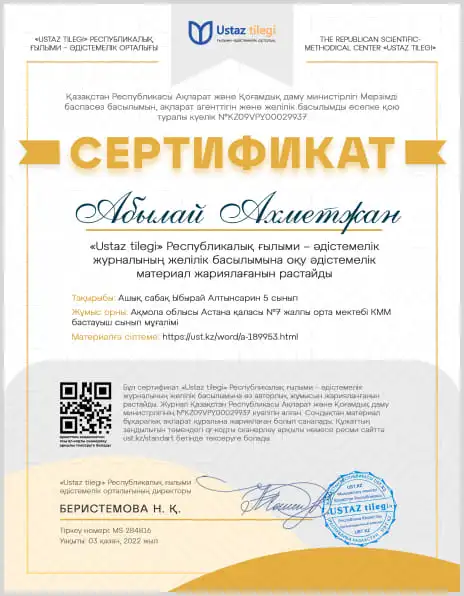
Сіз үшін 400 000 ұстаздардың еңбегі мен тәжірибесін біріктіріп, ең үлкен материалдар базасын жасадық. Төменде пәніңізді белгілеп, керек материалды алып сабағыңызға қолдана аласыз
 Дайын ҚМЖ. Барлық пәндерден 2022-2023 оқу жылына, жаңа бұйрыққа сай жасалған
Дайын ҚМЖ. Барлық пәндерден 2022-2023 оқу жылына, жаңа бұйрыққа сай жасалған

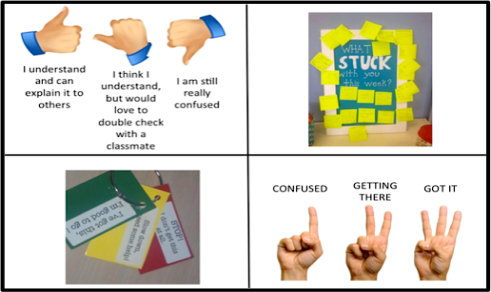
 ell done! Brilliant!
Good job! I like it!
ell done! Brilliant!
Good job! I like it!
